AIRD, Michael Derrick
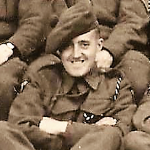
A raid on Boulogne Berek 24/25 June 1940
Raid on Guernsey
Allied operation from 25 to 28 February 1941 on the enemy occupied Greek island of Kastellorizo (or Castellorizo).
Tip: click on 'What Links Here' above for more.
The Force consisted of Nos. 3 and 4 Commando, approximately 50 Royal Engineers, and a group from the Free Norwegian Forces. They were transported on board two converted ships, the Princess Beatrix and the Queen Emma, now loaded with LCA's or Landing Craft Assault vessels. Leaving from, and returning to Scapa Flow, they were escorted by 5 Royal Navy destroyers.
Report by Brigadier J.C.Haydon, D.S.O., O.B.E., Commanding Special Service Brigade [more....].
The objective was to disrupt enemy lines of communication and damage installations and equipment.
26th - 31st May 1941. The Commandos were No.7 Commando, and 'D' Bn Layforce which was formed by the amalgamation of No.50 and No.52 (Middle East) Commandos.
These two units landed in Crete at SUDA BAY on May 26th, 1941. Withdrawal from the island had already been decided upon. Commandos, together with 2/8 Australian Infantry Battalion, were given the task of covering the withdrawal of the main body - the N.Z. Division - from the area CANEA - SUDA BAY, to an embarkation port at SPHAKIA on the south coast of the island. The route followed the road from SUDA BAY on the north coast through STYLOS - BABALI HANI and ASKIFOU to SPHAKIA on the south. Distance roughly 40 miles by road.
During the withdrawal the main Commando actions both took place on May 28th. Early in the morning, near STYLOS, counter attacks by No.7 Commando beat off determined German attempts to cut the road ofnretreat and allowed the tail of the main body to get clear.
Later at BABALI HANI some 5 miles further south, Middle East Commandos, who had taken up a defensive position astride the main road, repulsed two separate German attacks at noon and later about 15.00 hours. They held this position until dark, before withdrawing under orders at about 20.00hrs.
Source Commando Association Newsletter 83 of September 1986. Account of a visit by Veterans.Night of 31st May/1st June. This was a planned operation by 100 men from No 12 Commando at St Valery en Caux which was aborted after the raiding party were spotted by German naval forces.
Sheet indicating Troop locations 1st-30th June 1942 12 Commando
National Archives Document Ref WO218/41
A raid on Ambleteuse, Pas de Calais, by a small party from No 12 Commando.
Sixty five commandos of 5 Troop No1 Commando took part in twin raids against the coast of Northern France, code named Operations Chopper and Deepcut.
One section led by Captain Tom Hemmimg landed at Luc sur Mer (Chopper) and suffered a number of casualties including two killed, Pte. Elwyn Edwards and LCpl Cyril Evans.
The other section led by Lieut. Scaramanga landed at St Vaast Bay (Deepcut) and ambushed a German cycle patrol.
An extract from Commando Association newsletter 15 issued March 1952 regarding Operation Chopper.
"Capt. T. Gordon Hemming (ex 1 & 2 Cdos) decided last summer to revisit the scene of a raid made by a section of 5 Tp. l Cdo on September 23rd, 1941, supposedly at St. Aubin-sur-mur. He saw the Mayor with a view to establishing the exact place of landing, but discovered after many enquiries that in fact the landing had taken place two towns to the east, at a place called Luc-sur-mer almost two miles from St. Aubin.
On interviewing the Mayor of Luc the Captain was treated with great friendship and given an official reception. He found that all the inhabitants remembered the night very well, and have erected a large Memorial Stone inscribed with the words "The First Commando Landing in Normandy".
It was also discovered that the graves of the two men lost on the raid, L/Cpl. Evans [view record] and Fus. Edwards [view record], were beautifully tended in the local cemetery."
The raiding party landed 14 November. The attack on Rommel's HQ by units from Layforce took place 17 November. The raiding party included a group from No 11 Commando (see What Links Here above) led by Lt Col Keyes supported by others, including two from No 7 Cdo who had escaped from Crete, Sgt Fred Birch (No 7 Cdo & 51ME Cdo) and Cpl John Kerr (No 7 and 51ME Commando)
A raid on the French coast.
300 men from No 12 Commando, and some from the Royal Norwegian Army, landed on the Lofoten Islands about 300 miles North of Vaagso. Since the first Lofoten raid in March such operations were seen as a useful tactic to confuse the enemy and consequently divert enemy forces for future defence.
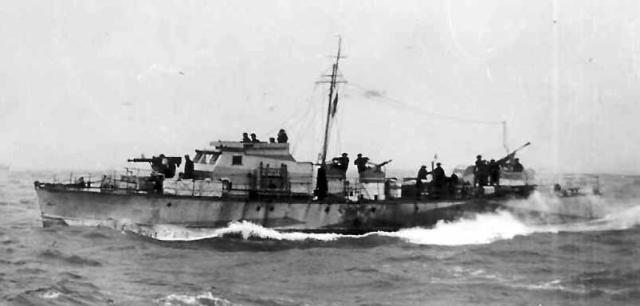
Great gallantry was displayed by the raiders and there were many casualties amongst the Commando and Naval personnel. The following were awarded the Victoria Cross, the United Kingdom's highest gallantry award for bravery in the face of the enemy:

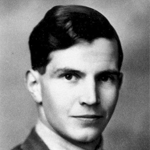
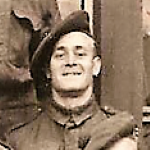
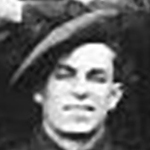
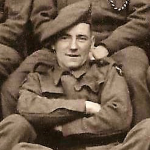
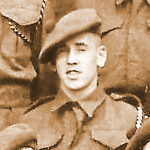
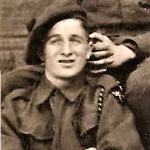
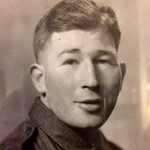
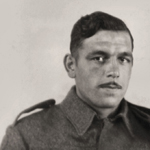
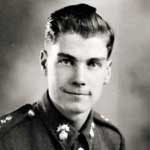
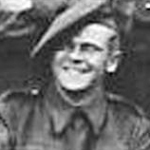
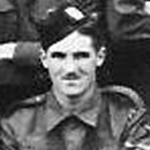
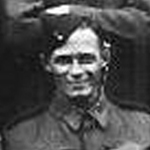
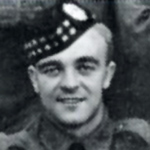
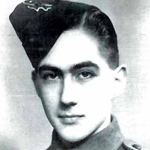
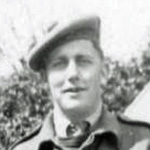
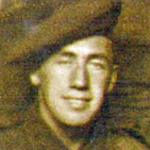
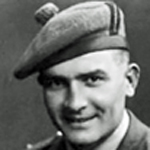
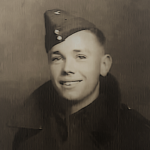
Son of Tom and Elizabeth Llewellyn, of Worcester.
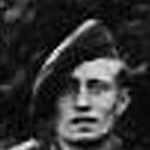
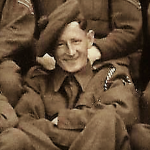
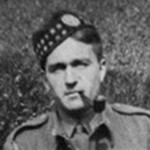
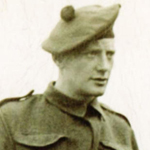
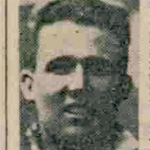
Captain Harold Pennington was reported missing 28 March 1942 after Operation Chariot at St Nazaire, later confirmed killed in action. He had embarked for the raid on motor launch ML 268.
B.A. (Oxon.), Kitchener Scholar, and Rugby Football Blue (1937).
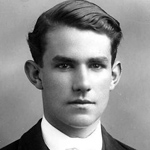
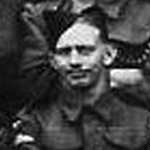
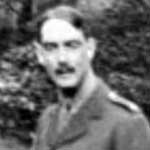
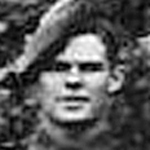
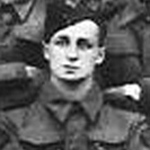
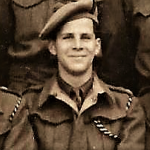
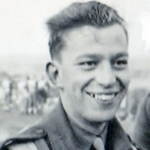
Lieutenant Mark Woodcock was reported missing 28 March 1942 after Operation Chariot at St Nazaire, later presumed killed in action at sea. He has no known grave. Son of Mr. and Mrs. G.A. Woodcock of Howbeck Road, Birkenhead.
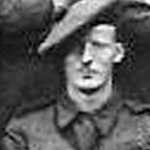
A booklet published in 1948 by the Tactical and Staff Duties Division (Historical Section), Naval Staff, Admiralty, SW1, covering aspects of the British Combined Operations raid at St Nazaire in March 1942 involving the Royal Navy and British Army Commandos.
Follow the link below to this (Battle Summary 12) and other Battle Summaries on the Royal Australian Navy website - World War 2 Naval Staff Histories Section
https://www.navy.gov.au/media-room/publications/wwii-naval-staff-histories
The following link takes you to reports about the raid at St. Nazaire published in London Gazettes on Thursday 2nd October 1947.
https://www.thegazette.co.uk/London/issue/38086/
Title: Supplement to the London Gazette of Tuesday, the 3Oth of September, 1947.
Combined Allied Force from all three Services. The Commandos had specific tasks outlined below in support of the main allied Force. The photo above and below show Commandos returning from the raid.
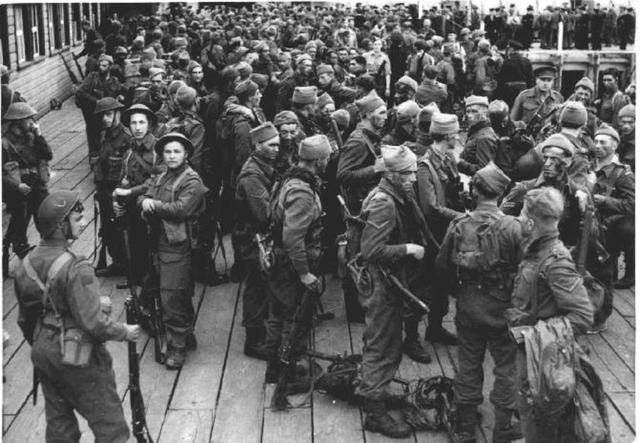
Corporal Serge Moutaillier (French) - wounded and pow, later executed
Private Gustav Oppelt (Czech) 19th August 1942
Captain James Howard Thomas (attached to No. 3 Commando)
2nd Lieutenant Edward Vincent Loustalot (attached to No 3 Commando)
1st Lieutenant Joseph Howard Randall, s/n. 0-418342 (attached Canadians) age 22.
Tech 4 Corporal Howard Murl Henry, s/n. 35125112 (attached Canadians) age 23.
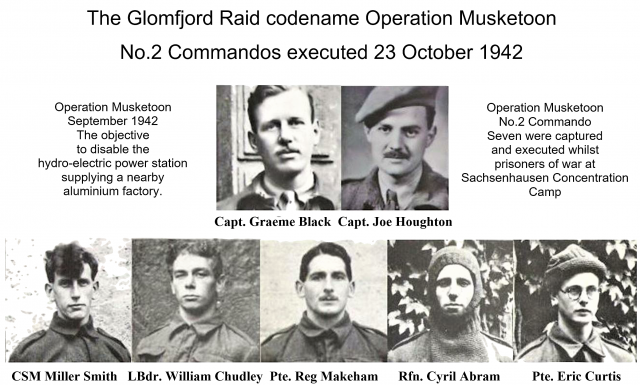
Captain Graeme Delamere Black DSO, MC
Captain Joseph Blundell Houghton MC
Company Sergeant Major Miller Smith
Lance Bombardier William Henry Albert Chudley
Private Reginald Henry Makeham
Rifleman Cyril Henry Abram
Private Eric Gordon Curtis
The Commandos were accompanied by 2 scouts from Norwegian Independent Company 1 (Noric1), an SOE unit who were both later killed.
Sergeant Erling Magnus Djupdræt
Corporal Sverre Granlund
Lance Sergeant Richard O'Brien, Guardsman John Fairclough, and Private Frederick Trigg all escaped and made it back to the UK rejoining No.2 Commando. Private Trigg was killed in action in Italy on 16 February 1944. Read more about them on the links below.
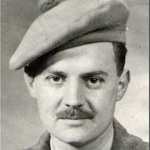
An account about Captain Joseph Blundell Johnson-Houghton MC, known as Joe Houghton, who served in No.2 Commando. It was written for The Colditz Society by Carol Kerr, with information provided by Capt. Houghton's sister, Mrs Desiree Roderick MBE, reproduced here with the permission of the author Carol Kerr, Mrs Desiree Roderick MBE, and The Colditz Society. Use the download facility above.
Company Sergeant Major Miller Smith, a former Police Officer, was one of seven men from No.2 Commando captured after Operation Musketoon and later executed at Sachsenhausen Concentration Camp under Hitler's Commando Execution Order. Son of James Miller Smith and Jane Smith, of Linthorpe, Middlesbrough, Yorkshire.
Read more about the raid [Operation Musketoon].
The raid was on an electricity generating station at Glomfjord in German occupied Norway. The men were taken by submarine to a remote Fjord, completed a difficult overland route, approaching their target from the rear and successfully destroyed it. Seven were captured and later executed at Sachsenhausen Concentration Camp under Hitler's infamous Commando Order.
Private Reginald Makeham, 6 troop, was one of the seven men of No. 2 Commando who were captured after Operation Musketoon, and later executed under Hitler's Commando Execution Order, at Sachsenhausen Concentration Camp, Berlin, 1942. Son of Reginald Linnel Makeham and Mary Susan Janet Hope Makeham; husband of R. Makeham, of Keswick, Cumberland.
Sources
CWGC.
Killing of British POWs Germany after capture in Norway Operation Musketoon / National Archives file WO311/382.
The death of Sgt. John Fairclough MM of Wrexham, Clwyd, was announced in Commando Association newsletter 110 issued March 2000.
In addition to the above from No.2 Commando of whom Lt. Col. Churchill was Commanding Officer, there were others from No.14 Commando (Operation Checkmate) who died there or at Belsen. Lt John Godwin, Sgt John 'Jack' Cox, Petty Officer Alfred John Roe, Petty Officer Harold Hiscock, Able Seaman Keith Mayor, Able Seaman Neville Burgess, and Able Seaman Andrew Anthony West.
The Allied invasion of French North Africa. The Commando units of the Special Service Brigade involved were part of Eastern Task Force landing on beaches close to Algiers operating alongside commando trained units of the US 34th Infantry Division.
An operation over four days to delay and harry enemy forces withdrawing before the advance of 36 Infantry Brigade.
To: Lt-Col. Trevor From: Philip Jordan
Acting under orders to support the advance of the 36th Infantry Brigade by turning the enemy's sea-flank, cutting his lines of communication and harrying his withdrawal, No. 1 Commando embarked in the port of TABARKA on the evening of November 30. The Commando, which consisted of six British and four American Troops, embarked a few minutes before dusk beneath the walls of the ancient fortress which used to guard this little place, and at 1800 hrs. turned East for its destination.
The whole Commando, together with 8 donkeys whose function was to carry the mortars, sailed in nine L.C.Ms and four L.C.As and the naval personnel responsible for landing them acted under the orders of the Army. Earlier night reconnaissance by the Naval and Commando Commander had selected as a landing place a beach some 60 miles East of Tabarka, which was protected by a spur of land from the long Eastward roll of the Mediterranean. (Map Reference: 4805 : Sheet 2 : 1/200,000). The Northern coast of Tunisia in this sector of land offers few opportunities for quick and successful landing: for the most part the coast is precipitous, with mountains rising almost immediately from the sea. At this time of the year the Mediterranean here is seldom calm: even on a windless day the accumulated swell of 900 miles of open sea usually beats on the shore with a ferocity that makes any landing such as that contemplated impracticable. For this reason a beach, whose approaches are guarded by a sand bar whose expanse is to some extent guarded from the perpetual swell by the Northward jutting mass of Dar Sidi el Moujad was chosen for the landing, scheduled in the original plan of operation for 0100 hrs. on Dec 1.
The journey through the night was accomplished without incident of any kind; and the beach was sighted soon after the moon came up. It is one of the first fundamental principles of all Combined Operations that material to be landed on an open beach shall be both buoyant and waterproof. On this occasion there were certain objects to which these principles could not apply: the 8 donkeys, and the cinema apparatus brought by a Sergeant of the Army Film Unit. The latter was immediately submerged and rendered useless, but 5 of the donkeys managed to swim ashore. Two of these only were in any condition to be made use of, and the other three were returned to the landing craft from which they had come, and thence "returned to store". As it turned out the two animals who remained on shore were useless, for the terrain proved to be unsuitable for pack-animals.
By 0315 all landings had been made, and the 10 Troops moved off to their appointed positions. The whole Commando was divided into halves, and the most Easterly position assigned to those five Troops who landed in the first wave. Each Troop was assigned a map reference and within its own area was to operate independently.
It had been a wet landing, with water rising approximately to just below the armpits of an average size man, but it was accomplished with the loss of only one wireless set, through who outer covering sea-water managed to percolate. All the other sets, eleven of them, were successfully landed, each capable of maintaining communication with both or either of the headquarters attached to each half. No attempt was made to land any set which could maintain communications with the 36th Brigade, the only available sets capable of covering the distance are too heavy to move across this ground.
[PAGE 2 OF NARRATIVE MISSING
cycle came down the road, but was allowed to proceed in the hope that it might be leading a convoy. Otherwise there was no movement until late that night when a drunken pilot of the Africa Corps (who insisted that all New Zealanders cut the throats of their prisoners) came careering along the road on a motor cycle, and was captured at the bridge just south of the road junction. With perhaps greater veracity he said that an attack was coming from the Bizerte direction.
On the third afternoon the enemy opened fire from the cover of woods, at a range of about 600 yards, and four armoured cars were reported to be moving forward to attack. Actually only two were seen, both of them eight wheeled, both coloured for desert war rather than for a Tunisian campaign in winter. The second of the two Troops was attacked from machine gun nests and shelled from eight wheeled armoured cars, but they replied with light machine gun fire and with armour piercing rifle fire; and the enemy withdrew.
All the Troops attacking the enemy road position came under heavy fire, but throughout the whole operation, from which they eventually withdrew because of the inevitable shortage of rations, the initiative remained in their hands. They were able to come and go at will, and to make and break contact with the enemy whenever it seemed proper to them to do so. For a total casualty list of 6 officers and 128 other ranks they were not only able to fulfill their programme and return with valuable information - particularly concerning Sidi Ahmed aerodrome, on to which at 1100 hours each day, twenty large transport planes landed with fighter escort, and on the first day fourteen bombers - but to inflict heavy casualties on the enemy.
They were able to observe that the enemy's main supply route from Bizerte is along the road from the fork just west of Sidi Ahmed aerodrome southwards through Tindja and the outskirts of Ferryville, for throughout the whole of the operation the enemy was moving his columns solely by this route. One such column, of 100 vehicles with A.F.V. protection and fighter cover was observed by Capt. Bradford's Troop during their observation of the aerodrome area, which is continually protected by not only very large ground forces but by A.F.V's as well.
Among the casualties were Captain Bradford who led his men to within four miles of the centre of Bizerte itself; and who was killed leading his Troop against the enemy. He died giving coherent orders to his remaining officer for the future disposition of his men. Earlier in the day he had lost one of his officers, Lieut. Petty, while his men, having cut the telephone wires near Bizerte and used them as trip wires, were crossing a piece of open ground in twos and threes. During this move they were fired upon by German's wearing French uniform. Six or eight of them, who were close enough to Lieut. Petty, threw hand grenades at him and his batman, and both fell. The batman was not killed, for he rose from the ground with his hands up, and pointed down to where Lieut. Petty was lying. This gesture was the signal for the Germans to throw three more grenades at the spot where Lieut. Petty had fallen.
Capt. Morgan, who commanded the Troop on the immediate left of Capt. Bradford was also killed. He too died after giving coherent orders to his men to carry on the battle.
It is some indication of the severity of the fighting during this operation that five officers have been recommended for the M.C., sixteen Other Ranks for the M.M., and one for the D.C.M. The whole operation lasted three days, after which the Commando spent two days withdrawing to a rendezvous down to the road to Cap Serrat, during which period they were able to investigate the right flank of the enemy engaged by the 36th Brigade. During the whole operation the average ration per man worked out at about one tin of bully, one packet of biscuits - all of which we sodden when the first landing was made - so tea, chocolate and cigarettes. One troop was able to buy a calf from local Arabs, which they then butchered and cooked. Others picked up a few eggs and chickens here and there.
Because of the necessity of travelling light, little ammunition was carried, and much of that was brought back. This does not imply a small casualty roll for the enemy, for each man is a highly trained shot, and the minimum effective proportion which he is expected to achieve is twenty-five per cent of all shots fired.
Perhaps the main lesson to be derived from this operation, which certainly went according to plan, is that the sea can no longer be considered a safe flank. An enterprise such as this, conducted by the navy and army, both operating under the command of the latter, shows that the function of the Commandos plus the Navy is that of the cavalry: to turn the enemy's flank and harass his rear while the main attack is being put in from behind. This operation showed beyond any doubt that when the original plan is such that adherence to it is possible, a small force, operating on cavalry lines, can inflict relatively high casualties on the enemy, disorganize his supply routes and withdraw at its own will without itself suffering in anything like the same degree.
It remains only to be added that none of the enemy prisoners withdrawn survived the journey to the final rendezvous, a rendezvous made the more cheerful by the fact that the first mail from home was waiting there, as well as a supply of Airgraph cards which are to be in England before Christmas.
No. 1 Commando: Operation Bizerte
Appendix 1: December 1942
Authors: Various
Copy of original document supplied by: John Mewett
Transcribed by: Jennie Barlow
Maps will be added later to this War DIary segment
The report is divided into the following headings:
1. Intention
2. Objects
3. Plan
(a) Navy
(b) Army
4. Execution of Plan
5. Attainments of Objects
6. Information
(a) Topographical
(b) Local Inhabitants
(c) Energy
7. Casualties
8. Recommendations
9 Map attached
REPORT
Ref. Maps: 1/50,000 Sheets No’s, 1, 2, 5 & 6, and 1/200,000 Sheet No. 2.
1. INTENTION
No. 1 Commando attached to 36 Inf. Brigade to support the advance of the Brigade by turning the enemy's sea flank - cutting his lines of communication and harrying his withdrawal. Leading elements of 36 Inf. Brigade to make contact with the Commando on D.2 at Road Junction 5094.
2. OBJECTS
1. Seize and hold Road Junction 5094.
2. Seize and hold Road Junction 5796.
3. Deny road to enemy.
4. Destroy enemy transport.
5. Delay and harry enemy forces withdrawing before the 36 Inf. Bde.
3. PLAN
(a) - NAVAL
The whole Commando to be embarked in 9 L.C.M.'s and 4 L.C.A.'s by 1730 hrs. D+1 at TABARKA. The flotilla to be formed up outside the harbour at 1800 hrs. and move off. The landing to be made at 0100 hrs, D.1 on the beach in the area 4805, in two waves, and to return to the base at TABARKA.
(b) - ARMY
The Commando to be divided into two halves, Left and Right Half, each half composed of five Troops and H.Q.s; Right Half commanded by Lt. Col. T.H. Trevor, and Left Half commanded by Major K.R.S. Trevor.
Right Half who were to take up the most Easterly Positions to be landed in the first wave. On landing four Troops were to move forward independently to following areas and to act independently on their arrival:
Holt's Troop: On extreme Right flank covering road from area 5395.
Morgan's Troop: Right centre in area Road Junction 5796.
Thompson's Troop: Left centre in area 5998.
Bradford's Troop: On extreme Left flank in area 6100.
Craven's Troop: In reserve with Right Half Commando H.Q. in area 5100.
Left Half to take up positions around the Road Junction 5094:
Davies' Troop: On extreme Right flank in area 4991.
Martin's Troop: In Right centre in area 4993.
Pollitt's Troop: In Left centre in area 5094.
Davidson's Troop: On Left flank in area 5295.
Marshall's Troop: In reserve in area 4895 overlooking road.
Headquarters: In a position overlooking Road Junction at 4996.
All Troops and H.Qs. to move independently and to assist each other where possible when in position.
COMMUNICATION
1 x No. 18 Set W/T and Signal personnel to be attached to each Troop and both H.Qs. Each Half to be allotted different frequencies but Control Sets at each H.Q. to come up on each other's frequency when required. All Ranks to use semaphore for Sub-Section, Section, Troop and individual communication. It was considered that runners could not be used as country was too rough and danger of observation by enemy too great.
Communication with 36 Brigade was considered impossible owing to the distance, country, and unavailability of powerful enough W/T Set which if available would be too heavy to land or transport across country.
4 - EXECUTION OF PLAN
(See Troop Commanders' Reports attached.)
5 - ATTAINMENT OF OBJECTS
1. Road Junction 5094 was occupied until D.3. when a German armoured column composed of 3 Armoured Cars, 2 Tanks and 3 Lorry loads of Infantry put in an attack from the West.
2. Road Junction 5796 was occupied throughout D.1. when enemy attack by A.F.Vs. and Infantry forced a withdrawal into the hills. After the tactical withdrawal it was still covered from the hills until D.2.
3. The Road between Road Junction 5094 - Road Junction 5796 was denied to the enemy until D.3.
4. All transport was destroyed which amounted to 1 Motor-cycle Combination with 4 men. One Motor-cycle Combination was allowed to proceed hoping it was leading a convoy.
5. The enemy was harried for 3 days and he was forced to draw on his reserves and to detach a force to counter the threat on his flank and rear.
6. The Commando occupied and dominated throughout 3 days the area between 47-62 Eastings and from the road to the Sea inclusive, during which time one Troop exploited to within 6 Kilometers of BIZERTE; which included the aerodrome SIDI AHMED 6700.
By dawn the whole Commando had advanced some 5 miles inland, without making any contact with the enemy or with the local inhabitants. Their objectives now lay before them, on the far side of the range: the road junction (5094) where the main route from Bizerte to Mateur round the Northern shores of Garaet Achkel is joined by a Secondary route which runs Westwards some two and a half to three miles South of the coast: the road junction 5 miles to the East of it (5796) at Douar Faroudja: and the road which runs between them. These they held, the former for three days with a small detachment that required an enemy column of three armoured cars, two tanks, and three lorry loads of infantry to dislodge them: the latter for one day. After a tactical withdrawal from the latter it was covered from the hills for a further 24 hours.
From now until three days later the Commando not only dominated this area and denied the use of the road to the enemy, but they sent a Troop to keep under continuous observation the aerodrome at Sidi Ahmed, about 7 miles to the North East of Douar Faroudja. During those three days the Command also occupied an area of some 125 square miles, inside which they moved with complete freedom; and were able to destroy any enemy transport attempting to use the road between 5094 and 5796. Those were the immediate and tangible factors of the operation, but in addition the Commando forced the enemy to draw on his reserves and to detach what may properly by assumed to have been a substantial force to counter the threat to his flank and rear.
All this was accomplished in the face of considerable topographical difficulties, none of which could have been suspected from a preliminary study of available maps.
Near the roads the country is open and easily accessible to tanks, but only in their immediate neighborhood. Off the road the Commando were able to advance only about 2 miles in every hour during the hours of daylight, and half that rate at night. The hills and valleys in the area of the operations are covered with Mediterranean heather, rising to a height of at least 7 feet. Higher up the mountains the scrub is lower but the going is no less difficult. Often the easiest method of progression is to imitate the goat and move on hands and knees, for these animals, which roam the hills in profusion, have forced their own tracks through the undergrowth. What tracks for human beings the country does provide are hard to find even on a large scale map, and normal movement is difficult without the aid of a local guide.
Trustworthy guides are hard to find, for there is no fixed local political orientation: some Arabs are extremely friendly to the Commando, some pointed out their positions to the enemy. Some Italians at an outlying farm showed great kindness to our wounded men, and one Troop Commander reports that he was informed that the Germans had shot three Frenchmen who had given food to our men. The Germans themselves almost certainly disguise some of their men as Arabs; and one German was shot wearing French uniform, as was one who appeared in the green beret of the Commando and a British gas cape and called upon Capt. Craven's Troop to surrender.
The main enemy position encountered lay a short way back from the road junction 5094, and appeared to be fairly well concealed. Its machine gun nests were sighted to give good enfilade fire, and it also disposed of some 2-pounders on concealed tracks. Fire was withheld until the Commando forces were well within an organized network of machine gun fixed lines.
This position was most closely approached by two Troops, those of Capt. Davidson and Capt. Pollitt. Both Troops reached approximate positions in the early afternoon and detached parties to form road blocks with heavy stones and whatever else they could find to do the work. On the following afternoon an enemy motorcycle. At the end of D.3. the Commando withdrew in its own time down the road to CAP SERRAT, investigating the enemy's Right flank during the process.
INFORMATION
(a) TOPOGRAPHICAL:
The country covered by the Commando is very different to that portrayed by the map. Near the Road the country is open and fairly good tank country. Movement off the road is difficult but possible. Rate of advance 1 M.P.H. at night and 2 M.P.H. by day (not using tracks). The hills and valleys are covered with Mediterranean heather, low bush and high bush. Tracks are hard to find from the map and it is advisable to have a local guide. Streams are mainly dry but there is plenty of water available in wells, again local knowledge is preferable.
Coast: The coast is difficult, many beaches impracticable owing to surf, with strong Westerly swell.
Movement: Movement is facilitated by getting into the hills where the scrub is shorter.
Roads: The main road between the Road Junctions was the equivalent of second-class English roads with room for two lines of slow moving traffic. Road to CAP SERRATT was passable to tracked vehicles of carrier type and if repaired suitable for single line traffic.
(b) LOCAL INHABITANTS
The local inhabitants’ attitude and behaviour can most easily be explained by their own saying that they were "Amis Toute la Monde". Many instances were provided of Arabs being exceptionally friendly and useful, but on several occasions Arabs definitely were hostile. Arabs on three known occasions deliberately gave away our positions and pointed them out to the enemy. Some of the Arabs were in all probability disguised Germans and Italians. Great kindness and even food was given to the wounded by some Italians at an outlying farm. One German was also shot wearing French uniform.
(c) ENEMY
a - Static Positions: Any positions encountered are shown on attached map. They appeared to be fairly well concealed M.G. nests sited to give good enfilade. Some small two pounder guns on tracks are concealed ready to move where required. Fire is held until our forces are well inside a well organised network of M.G. fixed lines.
b - Composition of Mobile Column: The enemy mobile columns which were sent out to combat the threat of the Commando were organised on the following lines:
Armoured Cars 2 - 3 as point section.
Lorry-borne infantry 2 - 2 lorry loads.
Medium Tanks 2 - 3
c - Use of Arabs: The enemy made use of Arabs as guides and it was suspected that they were disguising themselves in Arab dress.
d - L. of C.: Capt. Bradford's Troop which exploited to the East reported a large convoy of about 100 vehicles composed of supply lorries with A.F.V. protection and fighter aircraft cover, moving S.W. from BIZERTE. As this column did not come through the road dominated by the Commando, it is deduced that the enemy's L. of C. must be along the road which runs due south from Road Junction at 6501.
e - Personnel: The only enemy positively identified were a Corporal from a L.A.A. Regiment and G.A.F. officer and Corporal. During the operation, on at least one occasion the enemy adopted the distinctive Commando head-dress a British Cape A.G. taken from a Commando casualty in order to delude our own troops into thinking that they were friendly.
f - Air Forces: Throughout the operation the main BIZERTE aerodrome situated at SIDI AHMED was under observation. Fairly dense enemy air activity was observed on the aerodrome which included D.1. 14 bombers arriving from North East picking up fighter escort over the aerodrome and moving away eastwards. On D.1., D.2. and D.3. 20 large transport planes with fighter cover landed on the aerodrome at approximately 1100 hrs. each day. Fighter aircraft were stationed on the aerodrome.
The Troop which exploited to the aerodrome area discovered that very large enemy forces including A.F.Vs. made up the ground defences. This is confirmed by local reports.
Throughout the operation, German Fighter planes flew very low over the Commando area but failed, with one exception, to discover Troop positions.
7 - CASUALTIES
The following casualties were suffered during the operation:
British Troops: 4 Officers 56 Other Ranks
American Troops: 2 Officers 72 Other Ranks
________________________
6 Officers 128 Other Ranks
________________________
Wounded and removed to hospital 4 Other Ranks (British).
No. 1 Commando: Operation Bizerte
Appendix 1: December 1942
Troop Commanders reports
Authors: Various
Copy of original document supplied by: John Mewett
Transcribed by: Jennie Barlow
NA Document ….no Ref Number
TROOP COMMANDERS' REPORTS
Lt. D.H. Cowap (Capt. Morgan's Troop)
Bad landing; wireless set drowned and we had no W/T communication for the whole operation. Left beach 0245 hrs. on D.1.
At first light found ourselves at pt. 510014. Carried on and heard firing from area 545965 and assumed it to be Lieut. Holt's Troop which was on our left. Started up valley leading to high ground 573980 and heard firing to our Right which was coming over our heads. Sent out recce parties to our Right, found enemy firing at Capt. Bradford's Troop on our Left.
At about 1100 hrs. going up forward slope came under concentrated mortar fire which appeared to be from a good way off (1000 yards). Had two casualties here before getting out of range.
At 1130 hrs. runner came from Lt. Thompson's Troop to say that it had been fired upon and had had to keep their heads down from 0900 to 1100 hrs. in same area as that in which we had been mortared. Capt. Morgan and I climbed on to ridge and found we had got almost exactly to the right spot at pt. 577988. Owing to no scrub and very open country it was quite impossible to go down forward slope in daylight.
At about 1400 hrs. saw one sand-coloured 30-cwt and motor-cycle travelling down road from FERRYVILLE in Westerly direction. Got Troop to dig slit trenches and it was about 1500 hrs. that Lt. Petty told us that Capt. Bradford was on our Left and owing to nature of ground was withdrawing to higher ground, and we also decided to withdraw to the hills where there was some scrub.
At about 1700 hrs. on D.1. I heard fire and saw enemy carrier with what appeared to be a 2-pounder gun. I ran back to try and get somewhere near the position and saw that a light tank was blazing away directly into the slit trenches, and one of my L.M.Gs. was put out of action immediately. My other Bren gunner did very well and kept tank back enabling No. 2. Section to withdraw, which they accomplished. The Light Tank came up directly in the setting sun and hit the tank but seemed to have no effect. By this time Capt. Morgan had been killed and his last words were "Tell No. 2. Section to get back and the other to give covering fire".
Pte. Williams 83 kept up accurate L.M.G. fire and apparently wiped out enemy Section trying to get Machine gun into position, so that enemy machine gun never actually got firing. L/Sgt. Jones saw four lorry loads of enemy infantry come slightly off the road and unload as it was getting dark.
I took remainder of Troop back to position 543985 which took about 4 hours, arriving there about 2400 hrs. Sent out a patrol to find Troop signalers; and get maps etc. off Capt. Morgan. Lt. Kiaer and his Section withdrew on Capt. Morgan's orders.
At 1100 hrs. on D.2. Capt. Craven's Troop started to come through, which I followed, and joined Left Half H.Q. I remained attached to Capt. Craven's Troop throughout the remainder of the Operation.
Lieut. A.J. Davies (Capt. Bradford's Troop)
We were second Troop off beach and marched on bearing of 135 degrees and at first light arrived in area 545995, but discovered we had another three hills to cover before arriving at our position overlooking road half-way between Road Junctions. Capt. Morgan came up to tell us their position and all that they had seen.
We moved back to White Building with 8 or 10 men from Lt. Thompson's Troop, where we arrived at about 1500 hrs. After about half an hour, we saw the German A.F.V. and after 20 mins. a Sgt. and two men from Capt. Morgan's Troop came up and told us that their Troop had been heavily engaged on the hill and that Capt. Morgan was killed.
A wireless message was received to attack the aerodrome with Capt. Craven's Troop.
Left White House at 1700 hrs. to R.V. with Capt. Craven's Troop at approx. 0100 hrs. We left the R.V., not having seen Craven's Troop and continued on the road towards BIZERTE. Moved from position leaving certain men who were incapacitated and wireless men. Could not find Capt. Craven's Troop. The men were tired after moving across ploughed clay.
We came up on to road at 630005 and cut telephone wires, using the wire as trip wire. At road junction 655012 there were slit trenches in very bad state of repair (milestones indicated this to be 6 Km. from BIZERTE). Again cut wire and put up trip wire.
Having seen no enemy activity we started back and lay up night at about 0430 hrs. in a position in hedgerow. At about 0600 hrs. when we had rested we could see we were at pt. 603990. Capt. Bradford decided that the Troop would cross the open country in twos and threes towards the hills. About three quarters of the Troop had got across when some Frenchmen on the South side started firing - these Frenchmen were west of the farmhouse we were making for. On the Left there was spasmodic firing (the supposed Frenchmen were Germans wearing French uniform).
I went up into the hills where I met T.S.M. Coleman and he told me he thought Lt. Petty was killed, and that he and a Medical Orderly had left the hedgerow and when about 600 yards away saw 6 or 8 Germans throw grenades and saw Lt. Petty and his batman fall, then his batman rise with hands up and pointing to the ground apparently where Lt. Petty was lying. The Germans then threw a further three Grenades at Lt. Petty.
I took the Troop to the Troop R.V. White House, which was about half a mile further on. It appeared that 6 men who had gone round the Left flank were captured by the Germans. Capt. Bradford turned up after about half an hour and gave orders for the Troop to rest for about two hours.
At about 1000 hrs. on D.2. whilst proceeding to White House, I saw a convoy of about 200 vehicles moving up the road at pt. 590970 and proceeding S.W. There were motor-cycle combinations and about 10 large trucks moving close, together and slowly.
At about 1700 hrs, the first bullet hit the White House and the firing continued for about 10 minutes. Capt. Bradford sent me round to the back of the house to see where it was coming from, but I could see nothing. Just afterwards Capt. Bradford came round himself and was hit. He could not move his legs and L/Cpl. Tuffy (Medical Orderly) attended to him. I gave orders that Capt. Bradford was to be evacuated and that covering fire was to be given. A stretcher was made out of two rifles and toggle ropes, and we attempted to get to a ridge but Capt. Bradford died on the way up and we buried him there. The last words spoken by Capt. Bradford were "Tell Mr. Davies to get the men away from this position" spoken to Medical Orderly.
On Thursday morning D.3. we withdrew over the hills and found ourselves near the beach where we had landed. From there we travelled along the coast to CAP SERRAT where a friendly Frenchman provided two meals for 64 men (i.e. ourselves and 16 men from Capt. Davidson's Troop).
Capt. J. Craven
We landed at 0300 hrs. and those who landed first got a bad landing, but the others only got wt to their waists.
We moved away on a bearing of 162 degrees and arrived at position of RIGHT HALF Commando H.Q. at about 1000 hrs, staying in this position during D.1. Saw nothing until about 1400 hrs. when we observed people coming from the S.W. and it turned out to be Capt. Davidson's Troop.
Received orders to contact Capt. Bradford and with him, attack aerodrome (BIZERTE) or other enemy positions in that area.
We made a very good pace and did not stop until just before it got dark. I could not get any information either from Commando H.Q. or Capt. Bradford's Troop by our wireless.
We waited from 2000 to 2100 hrs. but saw no sign of Capt. Bradford's Troop so we moved back to area 603014. Reached dry river bed at about 2200 hrs. and rested there until 0200 hrs. Capt. Bradford still did not show up so in the morning I decided it was no use us staying there and went back to where Capt. Bradford should have been.
Reached position 575975 where we were on top of forward slope of hill with a little scrub for cover. I then took Troop farther down to look for better cover but found none, and at about 0600 hrs. on D.2. told the men to get into position on side of hill.
On hill Pt. 565975 (marked 127) we could see some people moving about and I decided to love my position and sent out a Section under Lieut. Davison to find who was on this hill.
Everything seemed alright when a man appeared wearing Green Beret and Gas Cape and asked Lt. Davison to surrender. I saw 20 people come up behind us and was just waiting for the reports to come when the battle opened up.
I sent Lt. Turnbull on the right flank. Lt. Davison's Section was firing back, and I moved across the open ground on the left flank myself. Machine Gun fire opened up at about 300 yards away and I decided to bring No. 2. Section back when I noticed an enemy A.F.V. was also firing as us, though this did us no damage. I told Lt. Davison to carry on giving covering fire. Then the enemy reported in the rear came up and I placed No. 2 Section in position to counter this, and I thought I was now in a good position. Lt. Turnbull shouted that he was held up, and shell firing started, so I decided to withdraw. Myself and 17 men got over the hill and Lt. Davison and Lt. Turnbull withdrew from what apparently must have been a trap.
At dawn on D.2. I was ordered to set off to Left Half H.Q. Arrived there just about 1400 hrs. when the battle on road had just started.
From then on I came under Major Trevor's command and moved that evening with Left Half H.Q.
Sgt. Scissons (Lt. Holt's Troop)
We landed at approx 0315 hrs. in the centre. The water was waist high. Our position was to be on the right flank of the Right Half near 5595. It was rough going most of the way with high scrub.
At 0730 we contacted Left Half H.Q. who shouted to us that we were too much over to the West. We immediately went directly East. We came over a high range of hills. The head of the Troop were 75 yards from a building near the road in a valley when we heard aircraft and had stopped. We heard no sound of firing or encountered any enemy or own Troops. A Machine Gun opened fire from this building and must have hit some men as I heard men shouting for the Medical Orderly (time 1100 hours D.1.). On our Right flank on a ridge about 50 to 75 yards away were German T.S.M.G's. After the first few volleys a 3" Mortar opened up. The head of the column had opened fire and we bagged the T.M.S.Gs. We were pinned down and I withdrew under cover to try a flanking movement. We went back 150 yards and crawled across the ground. On reaching a hill north of the T.S.M.G. position I had only four men with me. We were on the opposite side of the hill to the bridge and I ordered three men to go around the left side of the hill, and myself and one man went round the other side. One of the three men on the left side was killed by T.S.M.G. I shouted to the men on the left side of the hill to withdraw and I would cover them. Before I withdrew myself I was able to shoot one T.S.M.G. as he tried to fire at the three men withdrawing. Four of us were now left. The rest of the Troop were still down in the valley and were machine gunned from the air. I decided to withdraw to higher ground and contact another Troop. We had not gone far when we were fired on again by T.S.M.G. We found a good piece of cover and awaited darkness. While we were there about 1500 hours another Troop came into the position (Capt. Davidson's).
At 18.15 hours we moved and travelled 2 miles towards Right Half H.Q. and got a sleep in a good position until 0530 hrs. D.2. We moved on D.2. North West and contacted Pollitt's Troop at 0700 hrs. We remained with him during D.2. until he took us to Martin's Troop in the evening.
During withdrawal on D.3. we joined the reserve Troop (Marshall's).
Note: The Arabs in our first position on D.1. were pointing out our position to the enemy.
S/Sjt. McFarland (Lt. Thompson's Troop)
We landed at 0215 hrs. about the centre of the flotilla. We had to wade with water up to our armpits. We were to take up a position in Left Centre. Our route was generally South. The route was rough going crossing many hills covered with scrub waist high. We reached a hill at 5102 and thought we were close to the main road. Lieut. Thompson ordered me to move to the Right and take up a position, one Sub-section covering the road and one Sub-section in our rear. From this time I never saw Lieut. Thompson or the other Section again.
1000 hrs. D.1. I started down the valley with my Section and realised I was a long way from the road. When I got a position where the river runs North and South (5400) I heard shooting on our Right front about 1 mile away. I continued on my route toward my position and got about half a mile S.E. from the river when we were fired on by two machine guns and Snipers. Nobody was hit. We carried on and the firing ceased. We shortly afterwards met Morgan's Troop who were under fire at that time. We thought firing came from Lt. Holt's Troop in error. Capt. Morgan thought so also. We carried on to our position at 5998 and found Capt. Bradford's Troop there. We took up our position in conjunction with Bradford's Troop. This was about 1530 hrs. D.1. I gave the order for the men to cover the road. One motor-cycle passed from West to East but we let it go through. A car came along the road from BIZERTE containing two officers? and one corporal. They stopped opposite our positions. The German came up to our position and started firing on one of these sub-sections. He was shot. He was searched and his papers retained and have been handed in. The two Officers turned and escaped in their car. Capt. Bradford called me over and told me he was moving back three quarters of a mile, into a new position. He gave me the option of staying with him and attacking the aerodrome or returning to find Lt. Thompson. I decided to look for Lt. Thompson (1730 hrs. D.1.).
At 1800 hrs. Capt. Bradford's Troop departed and we remained with five men of Capt. Bradford's Troop who had been left behind. We could see fighting near the road on our right so we decided to withdraw further into the hills where we spent the night.
D.2. We tried to contact our own Troop without success during the day. We spent the night further to the West.
D.3. Withdrew along the road to Cap Serrat, where we picked up four men from Capt. Davis's Troop and reached R.J. CAP SERRAT at 1000 hrs: D.4.
Our rations were 1 Tin of bully, 1 packet of biscuits, tea, chocolate and cigarettes. We bought eggs and chickens from the Arabs.
We carried 200 rounds per T.S.M.G.
1000 rounds per B.A.R.
48 rounds per rifleman
We expended 30 rounds.
Capt. Davidson
Approached march similar to Capt. Pollitt's Troop. Parted from Capt. Pollitt in sq. (5197) as we had to travel farther East. We worked down to Pt. 524958 where we found we had a very good view of the road from the corner Westwards, and we placed our sniper there with telescope, which was about 1030 hrs. on D.1. We took up position at 523954. Heard firing on our left which we took to be Lt. Holt's Troop as we understood that his was the next Troop on our flank. We noticed that there is a ridge (not shown on map) running practically along the grid 95 which was actually higher than the one we were on. I thought it would be a good thing if we pushed on, and at about 1130 hrs. an Arab rushed down waving his arms and two machine guns opened up on our left front from Pt. 527950. We immediately got down and L/Cpl. Rogers opened fire with Bren, but was hit and knocked out and his gun put out of action. I called out to the Section Sergeants to work their men back. I gave the order to withdraw in a North West direction and most of the men started working themselves in this direction while exchanging fire with the enemy. An armoured car started working up from the road at Pt. 524947 and opened fire with heavy and light Machine Guns at 500 yards range, and most of the Troop headed due north into the hills as all of the lines of withdrawal were dangerous. I eventually got to 523955 with about half my H.Q. Section. The Mortar man laid three smoke bombs which he had, but the wind was not favourable. I knew that approximately 20 men did get over the brow of the hill and the smoke helped a few more.
We R.V'd. at Pt. 517997 and there were 27 men, apparently all the men who remained were in exposed positions and could not move. Lt. Gardner-Jones got out of the positions at 1600 hrs. and Lt. Gardner at 1500 hrs. The Sergeant Major in charge of part of the Troop apparently failed to find Commando H.Q. and found themselves so far back in the hills that they could see the stranded A.L.C.'s. on the beach, and so they made their way back along the coast to CAP SERRAT (Commando R.V.). All the men extricated themselves safely.
Lt. Gardner during his withdrawal to CAP SERRAT was told that three Frenchmen had been shot by the Germans for supplying food to the British Troops.
At about 11.00 hrs. on D.1. I had seen what I took to be M.T. Vehicles burning with a pale grey smoke at Pt. 490910.
Capt. Davies
Landed at 0300 hrs. in Left Flank boat. Got ashore practically all together and were first away from the beach. Marched on compass course of 180 degrees. Very bad country and estimated speed was one mile per hour. It was about 0830 hrs. before we definitely knew our position 5096. Found Marshall and Left Half H.Q. Lt. Marshall moved off immediately to his position. There was no traffic of any kind on the road. Crossed river bed and under bridge (not shown on map) and came to what I thought was one mile behind our position at 1500 hrs.
Moved just before dusk to (495925). Party on road to act as road block.
My H.Q. was within 200 yards of road. Lt. Martin on my right whom I contacted early on D.2. Nothing happened except some firing from area East of our position.
In the afternoon of D.2. enemy Motor Cycle came through and I let it go under the impression that Capt. Pollitt was still in his position. Later received message we were to deal with everything on road as Martin and I were the only Troops actually on the road at the time.
Just before dusk received message to close on river bridge 4993 and just at dusk took up position, with one section on road. Late that night another enemy motor cycle came down the road (German pilot of the Afrika Corps who was quite definitely drunk and who gave information that an attack was coming from the BIZERTE direction, he said that New Zealanders cut prisoners throats).
During next day D.3. Lt. Martin took over my prisoner and placed him with other prisoner in house.
Around 1400 hrs. fire was opened from cover of woods.
Enemy gun and Machine gun fire on our road position from about 600 yards range, was pretty accurate. Reported that four coloured armoured cars were approaching and I saw two eight wheeled sand coloured armoured cars. As situation became rather critical I went right flanking and the enemy apparently did the same. We did this three times and each time the enemy did so too. One of my patrols reported that Germans now occupied position 4993. A rifleman reported, which was quite true, that an enemy tank was coming in over the hill (this tank was about 500 yards range and was in the scrub about hull down so that I could just see the gun turret and two men's heads. Tank was directed to us by Arabs). Reported tank to H.Q. and received order to withdraw one mile in direction of river - saw another tank come over the hill so withdrew to 474930.
At 1330 hrs. received orders to withdraw a further three miles and then break off action. I arrived in open space as it was getting dark so decided to take up position at 453957 where we lay up for the night.
(D.4.) Withdrew a further three miles West and contacted Marshall's Troop at 413962. Then received orders to withdraw to White House 390947.
Our rations lasted three days without outside aid. Wireless still working well.
Lay up on fifth night in area 380940 with Marshall and Martin's Troop.
Arrived crossroads at 1430 hrs. on D.5.
Arrived on beach and were third boat to the right. Bad landing. Moved off together with Capt. Davidson's Troop. Hard going but did not stop until we arrived in area 5197. On way up Arabs reported that there were Germans in their village but Capt. Davidson could not find any. Arrived R.V. between 0900 and 1000 hrs. One section searched Arab villages in area.
Whole Troop halted at 514957 and I went forward with party on to road to make reconnaissance of the area. One section took up position facing BIZERTE. Number 2 Section went down forward slope. At 506944 put road block (heavy stones etc).
Heard considerable firing from the Left flank but could see nothing. Firing went on and I saw some Mortar smoke, but patrol could not find anything. Could not get into wireless communication with Capt. Davison's Troop on Left flank. Remained here until nearly dark. Moved back into area 951514 and had something to eat, leaving one section in position overlooking the road blocks.
After dark this Section withdrew and was replaced by a patrol which saw nothing. On D.2. received order to recce. area on my left (Capt. Davidson's). Acting on information from one of Capt. Davidson's men we moved eastwards and saw enemy on hill 523936. Found that three of four probable enemy machine gun posts were on right flank and decided to attack them at night. As Troop had had no rest with withdrew about one mile into the hills and I gave orders for everyone to feed and take rest, as we would attack at night. Just then orders came through for us to attack valley at 2000 hrs. Later received fresh orders that we had to harry the enemy in Area 5295. Stood to all night as information was that an attack was expected, and we watched road very carefully as we did not know whether or not the Right Half were coming through our Area.
Remained in position on D.3. and sent out one patrol to see that there was no infiltration by the enemy. Suddenly enemy A.F.V's. reported coming up from South West.
One Section proceeded to area 9653, leaving One Section in position; enemy armoured vehicles opened fire on them. Section withdrew and took up a position about a quarter of a mile back parallel to road. We saw the eight wheeled armoured cars come down road and open shell and machine fire. These were fired on by our L.M.G's. and riflemen with A.P. We withdrew to area 512954. The idea was to go back into that area to search for a wounded man, find an Anti-tank rifle, and see if the area was occupied. We withdrew and decided to go in again at night. Our position was 505966. One Section was still out sniping. No wireless communication with H.Q. so got through from Marshall's Troop that H.Q. were withdrawing at 1745 hrs. and acting on instructions we withdrew on the main road at 2100 hrs. patrols going down the road to try and contact enemy.
On D.4. moved to R.V. 416962. Moved a further three miles west where we met Major Trevor at 0730 hrs. and withdrew further as ordered. In Area 507945 we found there were enemy weapon pits.
On D.1. we had seen three four - ten lorries coming down road from East and turning back along the road to BIZERTE.
The L.M.G. which covered Left flank expended about 150 rounds of A.P. ammunition, and it did stop the leading armoured car after about half a magazine had been fired.
The Troop expended about 250 rounds of ammunition.
Average man had two tins of stew, half tin of bully, three bars of chocolate and two packets of biscuits.
Lieut. Martin
Landed on sand bar fourth boat from right. Got tangled with No. 6 Troop and were fourth troop from last to move off from beach.
Marched on a bearing of 190 degrees. At 0900 hrs. in position on peak overlooking main road. Rested from 0900 hrs. to 1100 hrs. From then until 1500 hrs. moved to position 92 and 48 grid line. Here I made a dump of surplus ammunition as the Troop had been carrying about 9000 to 10000 rounds.
During first night no activity by enemy or ourselves. At 0400 hrs. sent patrol to Right of Capt. Davis's Troop. At 0700 hrs. moved into position 92 and 49.5 grid. Found some natural trenches and improved them during the morning. One Section East of cross roads 94.5 and 50.5 and the other Section just across the bridge and they kept in position during the afternoon.
Just before dark a motor-cycle with 3 men in it came by and one of the B.A.R's shot it up - killed two and seriously wounded one.
Stood to all night expecting an attack by enemy.
On the morning of D.3. in same position and the food situation was bad. Firing occurred on right, apparently from the hill overlooking Capt. Davis' position. Not very heavy to start with (few automatics and rifle fire).
Drew one sub-section from South side to Northwest side of road on information from Capt. Davis' Troop that German tanks or armoured vehicles were in the vicinity. Withdrew a further 200 yards North side of road because of withdrawal of other Troop on right. Left one sub-section and 2 B.A.R's. in trench and when tank appeared these opened fire, and drew return fire.
I do not think we did any damage to the enemy as the A.P. ammunition was fired at about 800 yards range.
Our radio was practically done and consequently had difficulty in getting proper message about the withdrawal. Discovered we were to withdraw at 1845 hrs. to a position about three miles West into the hills.
At 2400 hours we stopped at 96.8 and 47.8 Grid, and at the first light on D.4. continued to withdraw by picking up track of other Troops in front. Just before noon met Capt. Davies' and Lt. Marshall's Troops in area 96.2 and 41.3.
All three radios were more or less not working but we gathered that H.Q. were waiting for us at White House.
Rested until about 1600 hrs. and then moved two or three miles Westwards where rations arrived.
Next day, D.5. moved to Cross Roads.
Total expenditure of ammunition about 80 rounds.
On average each man took 2 tins of sardines, 3 bars of chocolate and half-packet of biscuits,
Lt. Marshall
Made wet landing 0300 hrs. re-organised on beach and moved off at about 0325 hrs.
Marched on a bearing of 180 degrees, arriving at Pt. 503974 at 0920 hrs. where I contacted Major Trevor and was ordered to hold the Troop. My men ate at this time and had first rest.
At about 0900 hrs. received instructions to move my Troop to Pt. 485958 and await further instructions. Reached position shortly before 1200 hrs. at which time there was an unidentified sand-coloured car on the road some 800 yards to our front. It pulled away before anyone could be sent forward.
Position organised in afternoon, outposts established and patrol put on road to stop any vehicles.
First night quiet with active patrolling and listening posts in area.
Marched that night to SEDJENANE arriving at 2230 hours.
Ammunition expended - NIL.
Rations lasted through the fourth day.
Northforce section of No 12 Commando in operations in the Norwegian Fjords.
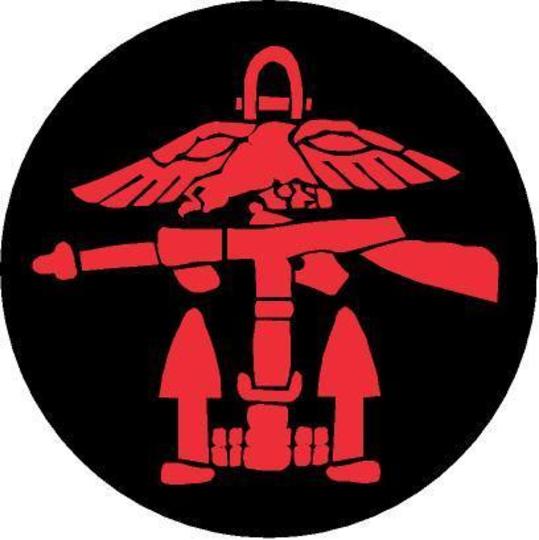 A combined operations raid on Axis shipping in the harbour at Kopervik, Norway. This raid was a No 14 Commando operation. The raiders managed to sink several ships using limpet mines, but were eventually captured and initially taken to Haugesund for interrogation before being transported to Sachsenhausen Concentration Camp.
A combined operations raid on Axis shipping in the harbour at Kopervik, Norway. This raid was a No 14 Commando operation. The raiders managed to sink several ships using limpet mines, but were eventually captured and initially taken to Haugesund for interrogation before being transported to Sachsenhausen Concentration Camp.
All but one of the group were executed whilst Prisoners of War. The man who was not died of Typhus in captivity before he could be.
The raid was led by Lt John Godwin, RNVR., who was in No 14 Commando as were the other Naval personnel. Sergeant Cox was attached to the group from No 12 Commando.
[Names below link to more about each man.]
All but Mayor and Roe were executed at Sachsenhausen Concentration Camp. These two men were transferred to the Concentration Camp at Belsen. Able Seaman Keith Mayor was executed there. Petty Officer Alfred John Roe died of Typhus. There is a Memorial at Sachsenhausen in memory of these men, and all the British and Commonwealth Forces, many still unknown, who were interned and perished there, or elsewhere, at the hands of their captors. These include the Commandos from Operation Musketoon [view].
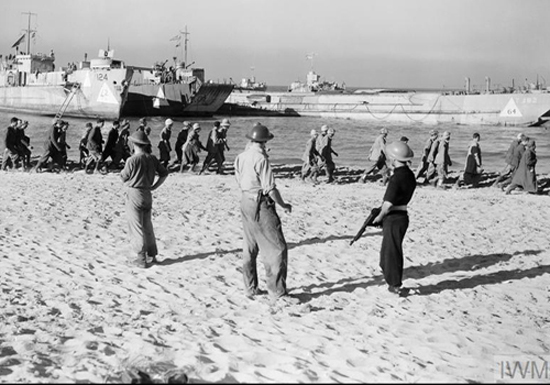
The invasion of Sicily. In addition to Commando units the Special Raiding Squadron (SRS) also participated. Whilst the SRS were engaged at Bagnara and Augusta and other areas, No 3 Commando's time in Sicily included one particular action at Agnone.
On the 14th/15th July 1943 No.3 Commando were tasked with taking and holding a bridge at Malati until the arrival of the 50th Division. After capturing the bridge from the Italians and removing the demolitions they had laid, a counter attack by the Germans with support of tanks inflicted heavy casualties on No.3 Commando.
Eventually they were ordered to withdraw, but the bridge had been saved from demolition.General Montgomery later ordered that a stone be carved with “3 Commando Bridge” and this stone cemented into the Malati bridge. An excellent account of the action can be found here :
Recollections of Sicily and Malati Bridge by Lieut. John Channon Erskine RE & No.3 Commando
One of the pillboxes still remains at the bridge and it can be viewed HERE.
The graves of some of the fallen from No 3 Cdo during this operation can be viewed on this link to our gallery for Syracuse War Cemetery
On the 22nd July 1943 No 2 Commando were sent to the action in Sicily. Read more about their part here in our No 2 Commando History section.
In 1942, an elite group of 120 former policemen joined one of the British Army's most notorious commando units.
In the early hours of 13th July 1943, Sam Hooper and his friend Bill Everett - both former policemen from Cardiff - stood on the deck of a British warship, surging towards the Bay of Agnone in Sicily.
"It was a very fast boat and it dropped us off about a mile from the beach," he recalled, "We had six landing craft on the boat and we went in formation to the beach in darkness. When we landed we had some terrible opposition from the Germans, but we got away with it."
It is a simple statement, but in fact the day was later recalled by one war historian as the 'most perilous enterprise' of the elite No.3 Commando unit's career.
It was Mr Hooper's third day of active service with the unit after a year of intensive training - and it was to be his last of the war.
He was one of a dozen policemen from Cardiff, who joined the unit in 1942, shortly after restrictions preventing police from volunteering with the armed forces were lifted.
Sam recalled how he and Mr Everett, who has since passed away, were put through rigorous training at the Commando Depot at Achnacarry in Scotland - where five-mile runs were a daily chore and being shot at with live ammunition was par-for-the-course.
"When I was home my mother would say things like, "Has that vest been aired?" he said.
"At Achnacarry it was wet socks and boots every morning and we would finish the day by walking through a river."
In January 1943, the former policeman and the rest of No.3 Commando boarded a boat for Gibraltar.
"I'll always remember that journey because it was absolutely horrific," he said.
"The biggest boat I had been in was a rowing boat in Roath Park, and here I was with waves 30ft high - it frightened the life out of me."
After spending some time in Gibraltar, the unit sailed to Suez in Egypt, where they began preparations for the allied invasion of Sicily. On 10th July 1943, Mr Hooper became one of the first Allied troops to set foot on Italian soil when he helped take down an enemy gun unit ahead of the invasion.
Just three days later his unit was sailing again under cover of darkness towards the Bay of Agnone, tasked to move up the beach behind enemy lines and take a bridge that had been rigged with German explosives. "The bridge was five miles inland and there were 350 of us," he said.
"We had a new type of weapon called a PIAT mortar, which went right through a tank and hit an ammunition wagon.
There was an enormous explosion and we all ran off, just as a Tiger tank came over the bridge and bombarded the devil out of us.
We had to split up and the group of chaps I was in ran straight into a German parachute division."
Mr Hooper and Mr Everett were both captured and taken by boat to Italy. Halfway through the journey, their ship was attacked by Allied aircraft.
"I was lying face-down and making myself the thinnest man in the British army to avoid being shot," he said.
Once on the mainland, the prisoners were handed over to the Italian army and taken to a 'flea-ridden' PoW camp near Naples, before being moved on to Austria.
There the camps were smaller and, although he and Mr Everett were separated, life was a little easier. But it did not stop Mr Hooper getting himself into trouble.
"When they asked us what we did I said I was a farmer," he said. "I was sent out to a farm and the woman in charge asked me if I could milk a cow. Of course I said yes - how hard could it be?"
"So she went and got a cow, put a stool and a bucket next to it and said, "Get started". I thought it was going to be easy, but I couldn't get a drop of milk. She realised pretty quickly that I wasn't a farmer."
Another time, he attempted a daring one-man escape on foot to Hungary, but was caught by German patrols on high alert after a mass break-out at a larger POW camp nearby.
"I was marched up before a military court and put in prison for several days," he said. "It was the first and only time I had a criminal record."
Finally, in May 1945, Mr Hooper was liberated and taken to France, from where he got a lift home to Britain in a Lancaster bomber.
"When I got home to Cardiff I didn't bother with the bus, just walked home to Whitchurch," he said. "When I saw my family it was an incredible feeling, unbelievable."
After a 'short break', he was back on the beat as a policeman in the city's Canton area, before joining the traffic department, where he and Mr Everett both remained until their retirement in 1971, after 30 years of service.
Operation Blackcock was a British amphibious landing to take Scaletta on the north-east coast of Sicily. Planned by Lieutenant General Sir Miles Dempsey’s XIII Corps, of General Sir Bernard Montgomery’s 8th Army, the operation was designed as one of a pair of Allied operations to cut off the last elements of the German forces trying to fall back to their evacuation point at Messina in north-eastern Sicily.
No 2 Commando History contains some more information [view]. [Source: National Archives records file DEFE 2/105, Combined Operations Headquarters: "Blackcock" and "Bullfrog" Date: 1943.]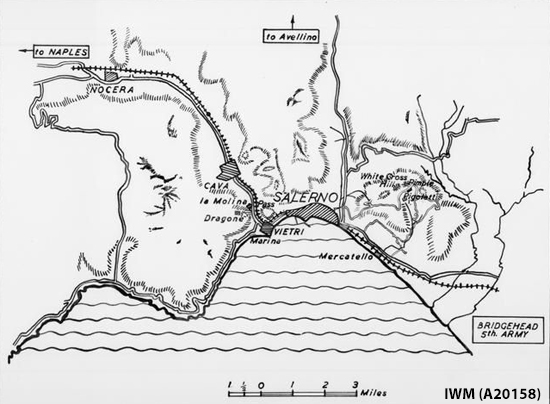
The allied invasion of Italy
Read an account about No 2 Commando involvement in this operation - [View here.]
First published March 1944.
[Transcribed from the 2 Cdo.War Diary]
"A daylight recce patrol went out under Command of Lieut. Keep. Dug in positions on the lower slopes of the hill were found with line connections to each other. They were equipped with beds and camp furniture. They were unoccupied and must have taken some weeks to construct. All the enemy dead seen in previous patrols had been removed, also most of our own, only badly mangled British dead being left. From the side of the hill it was possible to observe a stretch of the road invisible from Piegolelle*, and a group of buildings (700335) was observed to be the scene of much enemy activity. Tanks and staff cars kept coming and going, also D.R's. Fire was suddenly brought to bear on the patrol by the enemy, who, it was found, were in force still further up the hill. Mortar bombs began to fall round the patrol and some stick grenades were thrown. Fire was returned whilst the map reference was taken, then the patrol returned. Mortared on the way from the valley, three of the patrol were hit by fragments.
A document created by an officer of No 2 Commando with specifics of No.2 Commando casualties at Salerno, and locations of where they lay, or were first buried. It also includes details of three from the action at Scaletta, Sicily the previous month.
Amongst the Allied forces taking part were No 3 Army Commando, 40RM Commando, and the Special Raiding Squadron (SAS). They captured Termoli, thus unhinging the German defensive position along the river Bifurno. The enemy counter-attacked violently. For a time confusion reigned and the situation was critical, but the great steadiness of the Commando troops under Lt Col. Durnford-Slater, saved the town.
An account of No 3 Cdo 6 troop action written by Jack Cox who served in 6 troop can be read HERE
29th/30th Dec.'43. A diversionary raid behind enemy lines in the area of the Garigliano River, Italy. The intention was to cover the withdrawal of X Corps in preparation for its proposed assault across the Garigliano river.

Commando operations on or from the Dalmatian islands.
Read more here in our No 2 Commando History section.
An attack on the German held village of Grohote in the Damatian Island of Solta. The assault involved two Landing Craft Infantry (LCI), one from Vis and the other from Komiza. A spare LCI from Komiza accompanied them. Each towed a Landing Craft Assault (LCA). The RAF also provided aerial support to the Commandos consisting of 36 Kittyhawk dive bombers. The raid was successful and the Commandos later evacuated back to thier base at Vis with the entire German garrison of over 100 soldiers as prisoners.
This operation is also mentioned in our No 2 Commando History
|
-
|
Officers
|
R&F
|
|
2 Troop, 2 Commando
|
2
|
50
|
|
3 Gun Crews for 47mm. guns (Two from 101 L.A.A. Regt.* One from No. 2 Commando.)
|
3
|
21
|
|
4 Vickers M.G., 10 b.p.g. and crews from 43(RM Commando
|
1
|
40
|
|
Americans -
A Unit (Yugoslavian)
B Unit (Greek)
|
17
|
138
|
|
H.Q. Officers - Col. Churchill, Admiral Cowan, R.M., Lieut. Webb R.M.
|
3
|
-
|
|
-
|
Officers
|
R&F
|
|
1 Troop, 2 Commando
|
3
|
30
|
|
3 Troop, 2 Commando
|
3
|
30
|
|
4 Troop, 2 Commando
|
3
|
37
|
|
HW Troop, 2 Commando, with two 3" Mortars and 330 bombs
|
2
|
33
|
|
L.C.A. Protection Party, No. 2 Commando
|
1
|
11
|
|
-
|
Officers
|
R&F
|
|
Commando H.Q.
|
4
|
20
|
|
Brigadier Miles (Force 133)
|
1
|
..
|
|
Reserve rations and ammunition in case the Assault Force was marooned on Solta.
|
-
|
-
|
|
Casulalties
|
-
|
|
Capt. Prescott
|
Wounded
|
|
Lt. Manusos, U.S.A.
|
Wounded
|
|
Cpl. Mallitsis, U.S.A.
|
Killed
|
|
Cpl. Cox (2 Cdo)
|
Died of Wounds
|
|
Pte. Ritchie (2 Cdo)
|
Wounded
|
|
Dvr. Habib (2 Cdo)
|
Wounded
|
|
L/Cpl. Ryder (2 Cdo)
|
Wounded
|
|
Gnr. Sawyer (2 Cdo)
|
Wounded
|
|
Fus. Spinks (2 Cdo)
|
Wounded
|
|
Pte. Pembrey (2 Cdo)
|
Wounded
|
|
Pte. Letts (2 Cdo)
|
Wounded
|
|
Pte. Lucas (2 Cdo)
|
Wounded
|
|
L/Cpl. Miles (2 Cdo)
|
Wounded
|
|
Pte. Eagleson (2 Cdo)
|
Wounded
|
|
Lieut. Parnell (2 Cdo)
|
Wounded
|
|
Lieut. McMenamin (2 Cdo)
|
Wounded
|
|
Two American enlisted men
|
Slightly wounded
|
|
Four Rank and File of 2 Commando
|
Slightly wounded
|
Yugoslav Partisan and Commando seaborn attack on the German garrison of Hvar island off the Dalmatian coast in the Adriatic. The Force departed from their base on Vis island.
An Allied force of Yugoslav Partisans landed on Solta accompanied by Lieutenant Freeman and his signallers from No 2. After a sweep of the island for enemy forces they departed on the 10th.
A large scale raid on the 22/23rd May involving No 2 (Army) Commando, 43RM Commando, and one troop from 40RM Commando, on Miljet Island.
Formerly part of Yugoslavia.
Patrol: 20 Nov 44.
Type: Recce and observation.
Strength: 1 NCO 6 ORs.
Object: To recce areas 394353 - 394343 to ascertain whether there were any enemy
or recent traces of them in the vicinity.
Route Out: Proceeded along chaung 405352 to 403360
thence in a Northerly direction chaung 403352 - westwards down stream
to pt 400354 proceeded along chaung to 399354 then climbed hill 398354.
Route In: Headed to pt approx 398347 - crosses hills to 392351 -
back across country to hill NORTH of camp.
Time Out: 0800 hrs.
Time In: 1730 hrs.
Details: We found three distinct footprints at 400354, with separate toe on boot which appeared to be of recent origin. We followed them up the south side of the bank but lost trace of the track. Although we searched around we were unable to find any trace of anyone so we climbed hill 398354 where we found that the hills southward of our objective (a very prominent white tree) were in three ridges. We followed the centre ridge keeping watch on the valleys on both sides.
At paddy field 392351 we kept this and a small chaung under observation from 1100 hrs. At 1146 we heard a shot fired which appeared to come from the paddy field area. We however saw no sign of life.
Some prints of bare feet found in paddy field.
During the entire journey we didn't find any traces of either JAPS or our own posn either on the hills or in the valleys, although we found places where apparently someone had slept, but they did not appear to have been used recently.
21 Nov 44
Author: Major D.B. Drysdale, BM, 3 Cdo Bde [view].
Copy of original document supplied by: John Mewett
Transcribed by: Jennie Barlow
On 9 Nov. a small Bde HQ, 1 and 42 Cdos came under comd 25 Ind Div and took over a sec of the line SOUTH of MAUNGDAW. Extensive patrolling ops were carried out, details of which have already been forwarded in "Local News Bulletins". During this period two raids of a tp str were also carried out. One on ELIZABETH ISLAND by 42 (RM) Cdo and one on RAMREE by 5 Cdo. Eight recce raids were also planned by the Bde and carried out by the SBS who were under comd at the time.
As a result of these ops the following ranks in the Bde were decorated:
92411 Capt. John GARNER-JONES, WELCH, 1 Cdo awarded MC [view]
5884633 Gnr. E.W. RABBITT, RA(S/L), 1 Cdo awarded MM [view]
3133581 L/Sgt J. CROWE, SEAFORTHS, 1 Cdo awarded MM [view]
6286823 Pte L.C.R. OLVER, BUFFS, 1 Cdo awarded MM [view]
Ex 3182 Cpl ALBERT SMITH, 42 Cdo awarded Certificate of Gallantry [view]
Ch/X 1885 Cpl Robert COX, 42 Cdo awarded Certificate of Gallantry [view]
On 13 Dec the Bde was again conc at TEKNAF and came under comd 26 Ind Div to start trg for the assault on AKYAB which was, at that time, planned to take place on 19 Feb.
By the middle of Dec it became apparent that the enemy were withdrawing rapidly. By 29 Dec 74 Bde of 25 Div had reach FOUL PT. On 29 Dec the Bde Comd was ordered to report to HQ 15 Ind Corps. It was now almost certain that AKYAB Island itself was only lightly held and, acting on this infm, the Corps Comd decided to attack as soon as possible. The plan was for 3 Cdo Bde to be placed under comd 25 Div and carry out the assault on the Northern beaches of the island followed up immediately by 74 Bde which would be ferried across from FOUL PT in ldg craft returning from the assault. D Day was fixed as 3 Jan H Hr 1230 hrs. The op was to be mounted from TEKNAF. This allowed four days for planning and mounting! Early on the morning of 3 Jan when the force was at sea, a message was recieved stating that the bombardment had been cancelled as the natives had reported that the enemy had evac the island. This was confirmed by an RAF recce plane which landed on the airfield.
Apart from this the ldg was carried out according to plan. No mines or booby traps were encountered and the Bde advanced inland and occupied all objectives by nightfall. 3 Tp RM Engr Cdo did very good work on the beaches acting in the capacity of a skeleton Beach Gp.
The following morning 74 Bde passed through and occupied AKYAB town.
On 6 Jan the Bde concentrated in the area of the town. From there small recce patrols were sent in LCAs to the BARONGA ISLANDS and to the area of PAUKTAW. It was here that a patrol from 5 Cdo surprised a small party of the enemy and killed one offr and three OR without loss to themselves.
A recce of the area was carried out on the early morning of 10 Jan by a party in an ML. This party was fired on by an enemy gun in the area of the beach. It also disclosed a beach obstacle in the shape of a line of thick coconut stakes about 300 yds from the shore and just above low water mark. In the light of this infm it was decided to send in a COPP party on the night D - 1/D Day to place delayed action charges on the stakes timed to go off just before H Hr.
The COPP party returned on board the parent ship in the early hrs of the morning having successfully placed their charges. The preliminary naval and air bombardment went according to plan and appeared to be very effective, and the demolition charges succeeded in blowing a 25 yd gap in the stakes, As the first wave of ldg craft approached the beach they were met by desultory and, on the whole, ineffective arty fire. 42 (RM) Cdo landed on time under cover of an air smoke screen. The beach was found to be muddy below high water mark which made ldg difficult. Cas were also suffered from anti personnel mines which had been laid on the firm sand above the high water mark. This was the first time the beach mines had been encountered in this theatre. However, the unit pushed on and the first objectives and beach head area were quickly secured with little opposition. The tks then attempted to land but the first one out of the craft got hopelessly bogged and the attempt was abandoned. 5 Cdo then landed and passed through 42 Cdo. They met little opposition until they reached the ROSE feature where they were held up by hy MG and also to send a search party to DOG Island where there was a suspected enemy gun posn. A suspicion which eventually proved to be unfounded. As it was now almost low tide it was decided to direct 44 Cdo to DOG Beach where ldg was easier. However, due to a misunderstanding, this did not occur. As a result the unit had to struggle ashore for a distance of 300 yds through waist deep mud. This took them 3 hrs and neither men nor weapons were in a fighting state by the time they reached the beach. It was then decided to try and land the tks on BAKER Beach, but this attempt was met by shell fire and only one tk succeeded in getting ashore. The LCTs were then directed to EASY Beach. Here the tks were able to get ashore but could not get round the pt on to CHARLIE RED until a rd had been cleared through the boulders by the Engr Tp. By this time it was apparent that no further adv could be made until ROSE feature had been captured and that this would involve a full scale attack. It was too late to lay it on that day therefore disposns as shown on the map att were taken up for the night and plans were made for an attack by 5 Cdo supported by tks to take place the next morning. The attack was to be proceeded by an air strike and naval bombardment.
The air strike and bombardment on ROSE went according to plan and at 0830 hrs 5 Cdo supported by a squadron of 19 L attacked the feature. The attack was speedily successful and many enemy dead were found. At 1100 hrs 42 Cdo were ordered to pass through 5 Cdo and, supported by tks, to capture MYEBON and CABBAGE feature. 1 Cdo were ordered to move on ONION. 44 Cdo were relieved in the beach head area by a bn from 74 Bde and were moved up to the foot of ROSE and held in res. 42 Cdo cleared MYEBON village with little trouble but bumped by enemy opposition on CABBAGE. An attack was put in which was eventually successful although cas were suffered, incl the CO. [view]. In the meantime 1 Cdo had succeeded in capturing ONION where they met little opposition. 44 Cdo were then moved up to the area of MYEBON in direct sp of 42 Cdo and disposns for the night were adopted.
1 Cdo were ordered to patrol fwd as far as BASS and WORTHINGTON. No opposition was met and by 1100 hrs they were established on WORTHINGTON. 42 Cdo patrolled as far as WHISKY where they came under hy and accurate MMG fire from the area of Pt 200. It was now apparent that the features stretching from BUGLE to Pt 200 were strongly held and that their capture would involve a Bde attack with full sp. Consequently 5 and 44 Cdos were order to move fwd and concentrate in the area of ONION preparatory to a Bde attack on the following day.
The plan for the attack was planned to take place in three phases:
(a) The capture of Pt 200 by 1 Cdo.
(b) The capture of Pt 163 by 44 Cdo passing through 1 Cdo.
(c) The capture of BUGLE by 5 Cdo passing through 44 Cdo.
42 Cdo to remain in res.
The attack was to be preceded by air and naval bombardment of all features. The air bombardment failed to materialise but the attack went in according to plan. 1 Cdo met some determined resistance on Pt 200 but after some sharp fighting, supported by tks, the feature was secured.
44 Cdo then passed through and secured Pt 163 without opposition.
During this time the tks had worked fwd to the WEST of BUGLE and were engaging enemy gun and MG posns on the feature. Three tks got within 30 yds of the KANTHA Chaung where they inflicted hy cas on a party of the enemy who were trying to withdraw NORTH. Unfortunately one of those got bogged and it was decided to send a tp from 42 Cdo wide round the left flank to attempt to reach it and protect its rec. Unfortunately this tp came under hy MG fire while crossing the open paddy and was unable to reach its objective. The tk was not recovered until after dark when BUGLE was finally captured.
In the meantime 5 Cdo had assaulted BUGLE where by inf and MG opposition was met and overcome. By nightfall BUGLE was in our hands and 5 & 42 Cdos consolidated on the feature.
Patrols from 1, 5 and 44 Cdo were pushed fwd to the line of the KANTHA Chaung. A few enemy stragglers were mopped up and much material was captured.
During the course of the day a bn from 74 Bde passed through and formed a br head across the chaung. This unit was followed by the Engr Tp whose task was to rebuild the br at KANTHA. This they succeeded in doing although under shell fire. The Bde was now given the task of holding the line of the KANTHA Chaung while 74 Bde passed through and exploited northwards.
Patrols from 1 Cdo were sent to BRANDY Island and from 44 Cdo to the high ground to the EAST overlooking the MYEBON River. In each case the areas were reported clear.
The Bde concentrated in the beach area preparatory to embarking for the KANGAW op.
COPP recces were carried out on the nights of 19/20 and 20/21 Jan to find suitable beaches and release posns. On the night 21 Jan the Bde embarked.
The force sailed for DAINGBON Chaung and landed according to plan. No enemy opposition was met in the beach area although there was some shelling of the chaung to the SOUTH of the beaches. This caused no cas to craft or personnel.
1 Cdo advanced inland and reported HOVE clear without opposition. They were then ordered to press on to BRIGHTON - here they succeeded in clearing the whole of the SOUTHERN end of the feature but were held up by a small pocket of enemy established on the extreme NORTH tip. 5 Cdo was then ordered to follow up behind 1 Cdo and consolidate on BRIGHTON. 42 Cdo were ordered to hold HOVE and a posn on the WEST bank of the DAINGBON Chaung. 44 Cdo moved up to the WEST of BRIGHTON preparatory to carrying out a night attack on MILFORD. This attack was put in at 1930 hrs and met no opposition. During the night the enemy on the NORTH tip of BRIGHTON counter attacked 1 Cdo fiercely and hand to hand fighting ensued.
At first light 1 Cdo put in an attack, with arty sp, and cleared the end of the feature. 44 Cdo were then ordered fwd to PINNER. During the day the 8 HYDERABADS landed and took over def of the beach area, relieving 42 Cdo who were then moved fwd on to MILFORD. There was intermittent enemy shelling of the beach head area during the day. Attempts were made to land the tks but these proved unsuccessful due to the boggy nature of the ground. 44 Cdo sent a patrol to DUNS. They reported that there was a small enemy post just to the NORTH of the feature. During the night the enemy launched a strong counter attack, with hy arty sp, on PINNER. The attack was finally beaten off although 44 Cdo suffered hy cas from tree bursts.
It was decided to withdraw 44 Cdo to the WEST of BRIGHTON and relieve them by two coys of HYDERABADS. Enemy shelling of BRIGHTON, the beach head and L of C increased during the day. A recce was made of the approaches to FINGERS, with the object of establishing a standing patrol in that area. This drew hy small arms and arty fire and it was decided that the capture of the feature would involve a major op.
During the day the Bde received orders to consolidate and not to attempt any further adv.
During the night 1 Cdo sent a patrol to BERWICK which reported NES.
At dawn it became apparent that the enemy had brought up further arty and a hy conc was put down on the BRIGHTON feature. At one period 182 shells landed in the space of half an hr. Harassing fire of this nature continued throughout the day.
51 Bde landed and took over MILFORD and PINNER. 42 Cdo were withdrawn to the beach head area. Two tps of 44 Cdo were moved over to the WEST bank of the DAINGBON Chaung to relieve the HYDERABADS. During the course of the day three tanks were landed and moved to the WEST slope of BRIGHTON. They were unable to get any further fwd than this due to the marshy nature of the ground. Enemy harassing fire continued throughout the day.
44 Cdo started a series of patrols to try and locate parties of enemy stragglers reported to be in the DAINGBON area. During the course of these ops they located and destroyed two abandoned enemy guns but failed to make contact with any stragglers.
5 Cdo came under comd 51 Bde as res and moved up to PINNER at 0800 hrs. Two tps of 42 Cdo relieved 5 Cdo on BRIGHTON. During the morning 51 Bde put in an attack on PERTH and MELROSE. This was preceded by a very hy air strike. The attack on PERTH was held up by a strong enemy resistance on DUNS. It was finally abandoned. The attack on MELROSE was partially successful and by nightfall three quarters of the feature was in our hands. 5 Cdo were not committed and returned to BRIGHTON at dusk.
5 Cdo again moved up to PINNER under comd 51 Bde. The two tps from 42 Cdo had remained in the area of BRIGHTON. Attacks on MELROSE continued and BERWICK was secured. Enemy shelling continued throughout the day although on a much reduced scale. During the night 5 Cdo set an ambush across the rd and patrolled into the village of KANGAW. No enemy were seen and the rd appeared to have been unused by wheeled vehs for at least 4 days.
The Bde had orders to withdraw and arrangements were made to start thinning out on the following day. The PUNJABS were due to arrive on 31 Jan and were to take over BRIGHTON feature. 5 Cdo remained on PINNER under comd 51 Bde.
At 0600 hrs a hy enemy arty concentration was put down on BRIGHTON. At 0620 a determined attack was made on the NORTH end of the feature. The enemy's immediate object appeared to be the destruction of the tks harbouring in that area. By sheer weight of numbers a party of the enemy succeeded in reaching the tks and destroyed one and damaged another. 5 Cdo returned from PINNER about 1400 hrs and the PUNJABS arrived at 1700 hrs. No relief of units from the Bde was attempted during the day.
At 0700 hrs the feature was finally cleared by 5 Cdo. An immense amount of enemy material and 340 corpses were found. Four prisoners were also taken. During the day Bde HQ, 1, 5, and 42 Cdos were withdrawn and returned to MYEBON. 44 Cdo remained in the DAINGBON area and came under comd 51 Bde.
44 Cdo returned to MYEBON.
Map of the Kangaw Blockade of 3 Commando Brigade January/Febuary 1945 with coded areas marked.
This is a map showing a general view of all the key areas of 3 Commando Brigades action in the Myebon and Kangaw area of Burma during January and Febuary 1945
Account of the action fought by Nos. 1 and 5 Army Commandos and 42 RM Commando on Hill 170 on the 31st January 1945.
National Archives Document number WO218/81
Copy of Original document: John Mewett
Transcribed by: Jennie Barlow
Ref. Map Sheet BURMA 84 [? over 8] 1" to 1 mile.
The narrative has been kept true to the original with abbreviations etc.
PHASE I
(a) 0545 hrs. 4 Tp 1 Cdo attacked by Japs.
(b) 0930 hrs. P1 'W' 42 RM Cdo and P1 3 Tp 1 Cdo counter-attack.
PHASE II
(c) 1230 hrs. "X" Troop 42 RM Cdo counter-attack.
(d) 1400 hrs. 6 Tp 1 Cdo counter-attack.
PHASE III
(e) 1530 hrs. Arrival of 4 Tp and 1 Tp 5 Cdo.
(f) 1730 hrs. Disposns for night 31 Jan/1 Feb 45.
PHASE IV
(g) 1930 hrs. Relief of 1 Cdo forward Tps by 2 Tp 5 Cdo.
LIST OF APPENDICES
Appendix 1 Orders for counter-attack at 12.30 hours.
Appendix 2 Account of Am Sups.
Appendix 3 Account of medical arrangements.
Appendix 4 Sp. Arms.
Appendix 5 Jap tactics and deceptions.
PHASE I
(a) Attack on 4 Tp 1 Cdo posn.
0545 hrs. Jap started shelling area NORTH BRIGHTON (514497) heavily until 0605 hours.
0610 hrs. Green verey light fired NW of BRIGHTON which was taken to be 42 RM Cdo recognition signal. .
0615 hrs. Intense M.G. fire and grenade discharger shells on 4 Tp posn. possibly mortars as well. Lt. Semple, O.C. 4 Tp. had ordered 'Stand to' and now gave instructions that fire was to be held until targets could be clearly seen.
0630 hrs. Enemy had apparently some old Bren gun pits of 12 Tp 1 Cdo on extreme N slope of BRIGHTON. With intense M.G. fire an attack was launched on 4 Tp posn from N. This attack was beaten off by forward P1 of 4 Tp Comd. Lt. Knowland. A number of casualties was suffered and Lt. Knowland asked for more amn and men. These were then sent up from the rear P1 (Lt. Wight). Lt. Semple went forward to see the situation for himself. Enemy next heard digging vigorously on extreme N slope of BRIGHTON, and 4Tp was then subject to MMG fire which, it was estimated came from W.finger (512505).
Thereafter the enemy made repeated attacks in mass on N. BRIGHTON. These were again and again beaten off and heavy casualties inflicted on the enemy.
An attempt was made to assault the W flank of 4 Tp but this too was beaten off successfully.
0830 hrs. 4 Tp was by now suffering a number of casualties, and was running low and there were scarcely any grenades left. Lt. Semple asked for help.
The forward Sect was partly over-run and fought on until every man was either killed or wounded. Lt. Knowland [view] who was with the forward Sect was last seen firing the 2 inch mortar from the hip at point blank range at the oncoming enemy. The F.O.O. who was also forward with his party was badly wounded and subsequently died, and his wireless set put out of action. One of his gunners was also wounded in the legs but insisted on staying. He was found next day still alive though his trench had been occupied by Japs.
Fire orders for Arty were subsequently relayed by voice control to the Tp HQ set.
(b) P1 (W(Tp 42 RM Cdo and P1 3 Tp 1 Cdo counter-attack
0930 hrs. C.O. arrived in 4 Tpposn.
P1. of (W)Tp 42 RM Cdo arrived to help 4 Tp 1 Cdo, one Sect of 5 Tp 1 Cdo under L/Sgt. Perry came up to thicken up the posns vacated by (W)Tp 42 RM Cdo and protect the E. flank of 4 Tp which was subject to heavy and accurate sniping by the enemy. Tanks were asked to protect the left flank against infiltration by the enemy.
The Sect of 5 Tp remained in posn all day until relieved by 5 Cdo in the evening, accounting during its stay for a party of six Japs and one MMG. Gnr. Baker of this Sect. after killing two Jap snipers was himself killed.
P1. (W) Tp. 42 RM Cdo with Capt. Smith, who readily placed himself under command of Lt. Semple, then took over some of 4 Tps posns with one Sect, where there had been casualties. The remaining two Sections under Capt. Smith were ordered to clear the slope W. and N. of enemy. After moving about 20 yards along the slope the party which was 12 strong came under MMG fire and suffered 6 casualties. Capt. Smith decided to withdraw and reported to Lt. Semple. It was agreed then that the remainder of P1. (W)Tp should occupy some of 4 Tps posns on the NW and to stay and hold the posn.
At the same time as 42 RM Cdos counter-attack on the W. flank No. 1 P1 of 3 Tp (Lt. Crewe) had arrived and was ordered by Lt. Semple to clear the E. slope of the posn. Lt.
Crewe and two sections moved across the E. slope leaving P1. HQ and the third Sect. under command of Sgt. Lander to reinforce 4 Tps E. flank and shoot N. along the crest. The attacking Sects. moved with L/Sgt. Sincup's Sect. leading in extended order on the slope, and Cpl. Edman's Sect. behind. Lt. Crewe was on the left of Sgt. Sincup's Sect.
At the bottom of the hill L/Bdr. Toft saw 4 Japs in trenches, and the Sect. advanced after Sgt. Sincup [view] had thrown a grenade and killed 3 Japs. 7 Japs then bolted from a dug-out and 6 of them were killed, the seventh running away into some bushes in the paddy. Cpl. Hobbs was then shot in the jaw and went back alone. Lt. Crewe came down the hill to Sgt. Sincup and said he had been wounded in the leg. The P1 continued to advance over the bodies of the dead Japs and in one trench two made up demolition charges each of about 7 to 10 lbs. together with a Jap sword were seen. After advancing about another 30 yards the Sect. came under M.G. fire and grenades were thrown down on them from the top of the hill. Lt. Crewe was hit in the foot and Sgt. Sincup took over the two Sects. At this stage Gnr Beaney who had gone off to contact Sgt.Lander was wounded.
As the P1 was suffering casualties Sgt.Sincup decided to draw back until he was in line with the remainder of the force on top of the hill. On the way back Gnr.Beaney was found wounded. Attempts to rescue him were unsuccessful as he was covered by snipers. The Sects then took up posns protecting the E. flank of 4 Tp where they remained until evening when they were ordered by the C.O. to come under comd of Capt. Evill.
Immediately after the counter-attack by (W(Tp and 3 Tp the C.O. after discussing the situation with Lt. Semple went back to report to the Brig.
1015 hrs. The Brig came fwd with the C.O. and saw the situation. It was decided to clear the feature with a (Blitz) counter-attack by (X)Tp 42 RM Cdo. This was to take place at 1230 hrs. supported on the left flank by one tank of 19 L. Capt. Smith of (W)Tp was ordered to go in the tank to direct the shooting on to the NW. slope.
The C.O. remained fwd.
From now on the enemy continued to attack furiously but with little success, though the posn was subject to further intense and accurate grenade discharger fire. The situation was kept well in hand and by now then amn was arriving steadily and the evacuation of casualties continued throughout.
The first amn party to arrive came from 5 Tp 1 Cdo, who also helped to prime grenades, fill magazines, and distribute amn forward.
PHASE II
(c) (X)Tp 42 RM Cdo counter-attack.
1230 hrs. The counter-attack went in as planned (see Appendix 1 for detailed orders). Very heavy casualties were suffered by the leading P1 from intense MMG fire (the enemy now had three MMG on the ridge). The second P1 which was to have gone through was pinned by fire on top of the posn and was ordered to remain, occupying trenches where 4 Tp had suffered casualties. These Tps then remained in posn for the rest of the day until ordered withdraw by Lt. Col. Trevor.
(d) 6 Tp 1 Cdo counter-attack.
1300 hrs. 6 Tp comd Capt. Evill was ordered fwd from their posn to 4 Tp area where Capt. Evill was given instructions to thicken up 4 Tp posn with a view to holding the feature. However after (X)Tps counter-attack there was a brief lull in the battle and it was decided to put in an immediate counter-attack with one P1 to regain 4 Tps fwd posns.
1400 hrs. Lt. Palmer now brought up his P1 and after a recce with Sec Comds the attack went round the R. flank, with two 2 inch mortars and all available Brens in support on the crest.
After working round the E. flank for some 30 yards the leading Sect. came under intense MG fire and showers of grenades flung down from above. The P1 suffered about 50% casualties as a result of this heavy fire and the C.O. ordered it to withdraw. Lt. Palmer [view], Sgt. Morris MM [view] and Fus. Andrews [view] were then reported missing.
At this moment Lt. Larcher's P1 (6 Tp) arrived. They were ordered to send all Bren teams fwd to thicken up 4 Tp posns and replace casualties, the remainder maning posns in 4 Tp area on the E. Flank. Several men helped to evacuate casualties and with the amn supply. As men in the fwd posns became casualties so others were called fwd to take their place on the Bren guns. 6 Tp remained in posn until finally relieved by 5 Cdo.
During this time the call for amn and grenades from the fwd posns put a constant strain on the resources. The filling of mags, priming of grenades and the distribution of all types of amn was very smoothly and efficiently organised by Lt. Wight, Lt. Larcher and Sgt. Evans. Together they kept a constant stream of all types of ammunition going forward, and handled the constant trickle of casualties who were coming back
1500 hrs. The Brigadier ordered that no further counter-attacks were to take place before nightfall, and every effort was to be made to hold the position as it was. Col. Trevor asked Bde for reinforcements.
PHASE III
(e) The arrival of 4 Troop and 1 Troop 5 Commando.
1530 hrs. Lt. Col. Pollitt, MC [view] Comd 5 Commando and Capt. Burr Comd 4 Troop 5 Commando came forward with 4 Troop 5 Commando to see Col. Trevor. Col. Trevor asked to have this Troop made available as close as possible for immediate action.
Bren Groups of 4 Troop (5 Commando) were sent forward to reinforce the front of 4 Troop 1 Commando. The remainder of the Troop was employed in carrying casualties and ammunition. Sgt. Flatley and 6 men of 4 Troop 5 Commando were sent forward on the EAST slope to deal with enemy snipers who were active on the flank. Casualties were inflicted on the enemy.
1 Troop 5 Commando moving up behind 4 Troop 5 Commando was ordered by the Brigadier to send one platoon onto the EAST spur on the flank of 4 Troop 5 Commando. The other Platoon of 1 Troop 5 Commando was engaged at the foot of the EAST slope, where further casualties were inflicted on the enemy.
1630 hrs. Col. Pollitt was wounded when returning from 4 Troop 1 Commando position.
(f) Dispositions for night 31 Jan/1 Feb 45.
1700 hrs. Major Stuart 5 Commando who had taken over from Col. Pollitt came forward to see Col. Trevor, and received orders to (box) 4 Troop (5 Commando) on the EAST flank of 4 Troop (1 Commando). 4 Troop 5 Commando then commenced digging in.
At this stage the enemy's furious attacks had ceased and only a few snipers remained active. Col. Trevor then set about re-organising the elements of 3, 4 & 6 Troop (1 Commando) who were still in that area. The personnel of (X) and (W) Troops 42 Commando were withdrawn under command of Capt. Smith and ordered by Col. Trevor to report to Major Davies 1 Commando. The Section of 5 Troop 1 Commando was relieved by 1 Troop 5 Commando and rejoined its Troop.
The composite force of 3, 4 & 6 Troops 1 Commando which occupied 4 Troop's position came under command of Col. Trevor himself, and the Brigadier ordered that the position should be thus held during the night.
Col. Trevor then handed over temporarily to Capt. Evill and left the position to find the Brigadier.
PHASE IV
(g) Relief of 1 Commando forward Troops by 2 Troop 5 Commando.
1830 hrs. Col. P. Young, DSC, MC [view] came forward to see the position, when he met Col. Trevor [view] who was on his way back. After holding a conference with Col. Trevor and Major Stuart, the latter readily agreed to bring up a fresh Troop to relieve 1 Commando who had had no rest that day.
1945 hrs. 2 Troop 5 Commando Comd Capt. Beard arrived to relieve 1 Commando forward Troops, who were withdrawn to old positions for the night. The responsibility for the defence of NORTH BRIGHTON then passed to 5 Commando.
ORDERS FOR COUNTER ATTACK OF (X( TROOP 42 COMMANDO
AT 1230 HOURS 31ST JANUARY 45
by Lt. Colonel K.R.S. Trevor, Commanding, No. 1 Commando
1 Own Troops in position EAST flank ? Platoon 3 Troop 1 Commando centre ? 4 Troop 1 Commando
WEST flank ? Platoon (W) Troop 42 Commando.
2 Intention. To clear NORTH BRIGHTON of enemy.
3 (X) Troop 42 Commando Comd Capt. Jones to move forward with one Platoon forward and one Platoon back, with track as dividing line between leading sections.
4 H ? 5 to H ? 2" Mortars to put down smoke.
5 Tanks at call to fire uphill from ?hour under direction of Capt. Smith.
6 All Brens to move forward to 4 Troop 1 Commando to fire on the following programme:
H ? 5 to H ? 2 slow rate
H ? 2 to H rapid
7 Start Line ? Rear of 4 Troop 1 Commando positions.
8 H hour 1230 hrs.
ACCOUNT OF AMMUNITION SUPPLIES ON 31ST JANUARY 1945
At approx 0830 hrs. 4 Troop 1 Commando asked for ammunition of all types. 5 Troop 1 Commando sent forward their reserves of grenades and other types.
At approx 0945 hrs. mortar platoon asked for more H.E. as they had already expended 80 bombs. Cpl. Young Mortar Platoon with a small party of men made three attempts to reach the bomb dump but this was under enemy machine gun fire and they were driven back. In the last attempt Cpl. Young [view] was hit and subsequently died of his wounds. Pte.Boyes attempted to reach Cpl. Young but was unable to do so owing to the heavy fire. It was impossible to get ammunition from this source to the 3" mortars.
At approx 1100 hours. ammunition of all types was again called for. The only personnel available to carry ammunition to the forward Troops were No. 1 Platoon of 12 Troop 1 Commando. This was a dangerous mission as the ammunition party was continuously under fire enemy snipers.
It is impossible to assess the ammunition expenditure but some idea of the amount can be judged by the fact that each Troop had a reserve of 3,000 rounds 303, 1,000 rounds 300, 2,000 45 and 72 36 grenades and by 1200 hrs. the Brigade dump was unable to continue the supply of types required.
Fortunately RSM Powell was able to contact Capt. Gardner 1 Commando A.O. who immediately set about the task of ferrying ammunition from the beach. This ammunition arrived in time to supply the forward troops with everything they required. The supply was effectively maintained by the untiring efforts of 12 Troop 1 Commando who not only carried forward the ammunition but evacuated casualties on the return journey when there were not sufficient stretcher bearers available. It must here be mentioned that only 6 ORs of 12 Troop could be used at any one time as their position still had to be manned.
At 1500 hrs. as the ammunition party was busy evacuating casualties to the M.D.S. it was found necessary to get more men to carry ammunition. RSM Powell contacted a party of Indian Engineers who willingly supplied 12I ORs as ammunition carriers.
Towards evening the men from 12 Troop who had been working all day then volunteered to take as much water as they could carry to the forward Troops, in addition to the normal ammunition supplies.
At no time were the forward troops desperately short of ammunition.
ACCOUNT OF MEDICAL ARRANGEMENTS ON HILL 170 ? JANUARY 1945
At about 0700 hrs. 1 Commando R.A.P. moved to 4 Troop 1 Commando H.Q. and there treated some 15 casualties which had occurred during the enemy's initial assault. They were evacuated satisfactorily by Indian stretcher bearers.
The R.A.P. stayed in this area until 1030 hrs. when Troops moving in and the intensity of the enemy's fire made it necessary to clear all wounded from the position as rapidly as possible. The R.A.P. therefore withdrew to the area of 42 Commando H.Q., leaving the Medical Sgt. forward who supervised essential first aid.
However at 1200 hrs. as casualties were increasing in number and as the M.D.S. was close at hand, the R.A.P. moved forward again to the saddle at the rear of 4 Troop 1 Commando. Here it was able to supervise essential first aid and to organise evacuation from 4 Troop in front, and the Troops on the flanks. From 1200 hrs. to 1500 hrs. during the counter attacks put in by 42 Commando and 6 Troop 1 Commando, 42 Commando came up to augment 1 Commando R.A.P., assisting at the time of the intensest flow of casualties.
The Indian bearers worked well until midday. After this time only about 4 parties were seen at the R.A.P. and most of the bearing was done by 12 Troop 1 Commando. The Indian bearers were difficult to marshal owing to the language obstacle.
Troop orderlies worked forward with the defending or counter-attacking Troops and did excellent medical work under difficult conditions. Casualties in the medical section were killed 1 L/Cpl, and wounded 1 Sgt. The former had gone forward to the front trenches early in the battle and having dressed four men who were wounded manned one of the Brens but was killed when his position was overrun.
1 Arty (25 pdr& Med)
Tanks
Aircraft
2 Artillery: The Arty was used throughout the day (a) to neutralise enemy supporting fire on FINGERS, (b) as harassing fire on THAMES CHAUNG. This was controlled by F.O.O. from the forward position until about 1600 hrs. when fire control was directed from MILFORD, whence whence reports had come of enemy movement across the chaung. (c) On NORTH end of BRIGHTON 300 yards in front of enemy position, later reduced to 150 yards.
The F.O.O. on BRIGHTON was seriously wounded at 0800 hrs. and his set was put out of action. His place was taken by the battery commander who sent his orders back on the Command net. The battery commander was wounded twice and his place was taken by another F.O.O. in the afternoon.
3 Tanks: Of the 3 tanks on the bridgehead 1 was destroyed by enemy action at 0600 hrs. and a second partially disabled at the same time. The third took part in the action throughout the day.
At 0830 hrs. the tank was asked to give support on WEST flank of 4 Troop 1 Commando who were at that time hard pressed. At 12.30 hrs. the same tank was used to supplement the fire power for (X( Troops counter-attack. It had one periscope shot away. At 1330 hrs. the tank withdrew to replenish ammunition and POL returning at 1430 hrs. It continued to fire ME effectively with three bursts on NORTH end of BRIGHTON. Shells were ranged to burst 50 yards in front of 4 Troops 1 Commando position. This was undoubtedly extremely effective in countering Jap infiltration on the left flank.
4 Aircraft: These were not used in direct support until the culminating point of the battle when a heavy strike was made by Thunderbolts at 1700 hrs on FINGER. This caused heavy casualties among the retiring enemy.
5 Navy: At 0700?hrs. 1 LCA with 13 Brens went up THAMES CHAUNG to clear the banks. This was followed by an M.L. at about 1030 hrs. which opened fire on fingers and the banks of the chaung.
JAPANESE DECEPTIONS
Many of the usual tricks of the enemy were employed, such as shouting names of officers and senior NCOs. Further to these during the day were:
(a) Shouts of 'withdraw Commandos' and 'cease fire'.
(b) Six Japanese were seen wearing Green Berets, and one dead Jap was subsequently found wearing a Green Beret.
(c) Fire crackers were used to give the impression of heavier fire power.
(d) Cries of 'I am wounded'. 'Help' and 'Come and get me out', etc.

At about 0545 hrs. I was in my dugout on the reverse slopes of 170.
The Japanese indulged in a fairly prolonged barrage which didn’t compare to badly with a Bosche effort. This was followed by musketry from the N end of 170. I got up and got dressed and went along to see Lt Col Trevor and found him in his HQ. It was daylight when we arrived. On the way I told various sections I passed what information I had gathered from Bde.HQ. This was to the effect that a party of about 20 Japs had rushed our 3 tanks that one was believed to have been set on fire, and that 4 troop of No1 commando was surrounded by snipers but the situation was well in hand.
I found Lt Col Trevor and some of his HQ sniping at a diversion party down in the bushes and paddy in rear of his HQ. I borrowed a Garand rifle and both Cpl Christopher and myself had a few pot shots with no obvious results, but Col Trevor knocked one over and so did some of his signallers. An officer and three other Japs were found later in the target area. Capt. Cotton of 42 Cdo rushed out and got his sword. He was shortly afterwards wounded in the thigh by a shell I think.
One of the Japs down in the field was lying on his back moving his arm from time to time. We hoped to get him as a prisoner, but he killed himself with a grenade.
The Brigadier came along and so I went back to Bde and had my breakfast.
Later presumably after 0930hrs I went back to see Col Trevor again. By this time he had gone up and joined 4 Troop. I visited him there, there was a good deal of fire at the time, but Col. Trevor didn’t seem to think there were very many Japs in front of him. As I went forward to see Col.Trevor I met Lt. Crewe being carried back along the ridge, sitting up on a stretcher. He had been wounded in the foot and leg. Capt. Smith of 42 was already with Col.Trevor by this time.
I went down the gully to where the tanks had been laagered. I found that one had indeed been burnt out. There was a good many bodies about. None of them had been moved so I proceeded to inspect them. The first was an officer. He had got right inside the tank and set it on fire. About six of his men were dead behind him within 20 yards or so. They had pole charges (round charges on the end of bamboo poles). One of them had gone off prematurely and killed its owner very thoroughly. He was covered in a sort of powder the colour of mepacrine. In the paddy were four riflemen who seemed to have been giving covering fire at close quarters. One had died with his forefinger in the loop of a 36 grenade. Taking a look at the other party, we found one of them breathing. His right forearm shattered, but some SBS soon whisked to the MDS. He is still alive.
During the morning it was reported at Bde. HQ that an ICA had destroyed a party of Japs crossing the N Chuang (Thames). I took a patrol to investigate this report. We found no bodies but saw the imprint in the mud of at least one barefooted man; found 3 clips of Jap rifle ammo in their forming up area and a Bren magazine at the point where I consider they may have landed, for it was opposite to the mouth of the contributory of the ‘Thames’. During all this time there was continuous firing on 170 and we saw several of our own troops advancing among the tree at the top of the hill. I got the impression that very little of the hill was left to the Japs.
Perhaps it was my next visit to Bde. that a report came in from Col.Trevor that there were still 40 Japs at the end of the feature. The Brig.turned to Capt.Tripp, the IO and said ‘send that to division tell them there are 20 Japs at the end’.
By this time a steady stream of casualties was moving along the back of 170 to the MDS, and one marine said he saw 61 brought past during the day. While I was at 1 Cdo’s HQ on one occasion, about 1500hrs, a report arrived that the situation was critical. However reinforcements from 5 Cdo had begun to arrive from PINNER and the Brig. had ordered Lt Col Pollitt MC to take a troop forward as soon as he had arrived. 1530 Hrs Col Pollitt and Capt.Burr of 4 troop 5 Cdo arrived 1 Cdo HQ.
The next time about 1630hrs I went to see Col Trevor I met Col Pollitt being carried back on a stretcher face downwards. He had been shot through the knee. I also met Lt. Bolitho walking back, shot in the stomach being supported by one man and very angry.
I met the Brigadier who ordered me to arrange for a flanking movement by a Coy of Punjabs to pin down the enemy on the west side of 170 with fire from the paddy; and for the tanks to go into action again.
Only one tank was in action by this time, but as soon as I could get hold of a platoon from 5 Cdo it advanced again. I met Major Stuart, told him Col Pollitt was hit and arranged for this support.
I then found the Col of the Punjabs and arranged for two platoons guided by my servant, to go and engage the enemy from the mangrove where they themselves had originally formed up.
When the Brig returned to his HQ he ordered me to organise the defence of the hill for the night. I went to see Col.Trevor and met him coming back at about 1630hrs, from his forward post. I had Major Stuart with me and we arranged to reinforce 1 Cdo’s forward troop with a strong fresh troop of 5Cdo and if possible to withdraw the tired troops of 1 Cdo. As it was getting dark I told Col Trevor it was unlikely that we could do more than reinforce him for the night.
By the time I got back to the area of Bde. HQ with Lt. Nias , 10 of No 1 cdo, I found that enough Punjab’s had arrived to take over from 2 troop No 5 Cdo so I sent Capt.Beard guided by Lt. Niasto report straightaway to Col Trevor. I got Capt. MacLennan the camp commandant, to show the Punjabs all the posns on the right and returned main HQ No I Cdo, where to my delight (and also surprise) I found that troops of 42 Cdo were already reinforcing the two weakly held features. We were now able to take out 1 Cdos forward Troops. I saw Col Trevor and he was satisfied that all was well. I went back to Bde. It was dark.
The next morning there was more firing. I went again to see Col Trevor and Maj Stuart; we had had four casualties in a weak attack from grenades. I found him very eager to attack and drive the enemy off the end of 170, once and for all. Since we were to hand over that day I was in favour of this.
Later I heard that he had succeeded and the hill was covered with dead. I went there and saw a truly incredible scene. The Japs covered the hill almost like a carpet. They were piled onto those of our our posts which they had swamped. Our soldiers were busy collecting Brens and Jap ******* , and looking for documents and so on. Several of our own men were in the open where they had fallen in one of the many counter attacks. A lot of Japs had been killed by the shelling and mortaring. Among some bushes on the N side of 170 were 16 dead Japs and two of our own dead. Here we captured another prisoner, who had half his foot blown off and had crawled into the bushes. He wanted us to shoot him.
There was still a good deal of mopping up to be done in the chaung and in the paddy, but the battle was decided by the clearing of 170.
Except that the Japs hardly used their artillery except in the preliminary barrage –presumibly because of the lack of W/T- and their mortar practice is very poor compared to the Germans, the fighting on 170 could hardly have been more severe. I am convinced that no European troops would have attempted to hang onto their precarious foothold at the end of 170 for as long as these Japs did, in the face of all the arty , 3 “ mortar and small arms fire brought to bear on them. For 24 hrs the forward troops were within grenade range. On our side a man often became a casualty within a few minutes of taking over a Bren from another who’d been hit.
Had the pimple at the end of 170, divided, as it is, from the rest of the position by a sharp re-entrant been carried, it would have been a major operation to re-take it. Above anything it was the long and stubborn resistance of 4 Troop 1 cdo and the heroism of the officer commanding the forward platoon that prevented this. According to PW reports, 500 Japs attacked the position of whom 300 were killed.
Myebon 11 /Feb/45 P. Young Col D. Command 3 Cdo Brigade.
Appendix to HQ 3 Cdo Bde War Diary for Feb 45
15 Indian Corps: Special Order of the Day
Field 17 Feb 45
Author: Lieut. Gen. Sir A.F. Philip Christison, KBE, CB, MC, Comd 15 Indian Corp
Copy of original document supplied by: John Mewett
Transcribed by: Jennie Barlow
To: 3 Commando Brigade
Having been placed under command of 15 Indian Corps to lead assaults in particularly hazardous and important amphibious operations, you have successfully completed the tasks which were assigned to you.
Your courage and determination in assault and attack, your tenacity and aggressiveness in defence and counter attack have won the praise and admiration of the Commanders and troops, British, Indian and Gurkha of all other formations engaged in the operations and who fought beside you. Through your exploits at AKYAB, at MYEBON and at KANGAW and the valuable reconnaissance which you made along the ARAKAN Coast, you have gained a reputation throughout the Corps for indifference to personal danger, for ruthless pursuit in success, for resourceful determination in adversity, which has been a source of inspiration to your comrades in arms.
The battle of KANGAW has been the decisive battle of the whole ARAKAN campaign and that it was won was very largely due to your magnificent defence of Hill 170.
I am very proud of you and thank you all for the decisive contribution which you have made to the success of the campaign and the rout of the Jap in this theatre of operations.
I deplore the loss of your gallant comrades, and trust that your wounded may soon be restored to your ranks.
For the future, I wish you all happiness and success.
(To be read out on parade to all ranks.)
Appendix to HQ 3 Cdo Bde War Diary for Feb 45
25 Indian Division: Special Order of the Day
Field 3 Feb 45
Author: Major-General G.N. Wood, OBE, MC, Comd.
Copy of original document supplied by: John Mewett
Transcribed by: Jennie Barlow
On the victorious conclusion of the operations for the capture of the MYEBON peninsula and the cutting of the enemy L of C at KANGAW, I wish, on behalf of 25 Ind Div to express to 3 Cdo Bde the admiration we feel for their speed and fire in attack, and their aggressive and cheerful spirit when defensive actions have been imposed upon them. 3 Cdo Bde has had a stern test for many officers and men their baptism of fire but they have emerged from it with a reputation of which all ranks must always be proud. Their comrades of 25 Ind Div deplore their losses, among them many who had already become our personal friends, but these losses have been avenged in full.
I count not least among the fruits of our victory the mutual trust and esteem which has been established on the battlefield between the soldiers of 3 Cdo Bde and their British and especially their Indian comrades of 25 Ind Div.
(To be read on parade to all ranks.)
Order of the day Serial No 8
2nd February 1945
Author: Lt.Col. K.R.S. Trevor, Cheshire Regiment
Commanding, No. 1 Commando
Copy of original document supplied by: John Mewett
Transcribed by: Jennie Barlow
Gentlemen, I can't say how proud I am of the unit, and honoured to command you. During the whole time at Hill 170, every man in every Troop and in every department worked and fought magnificently. There was not a weak link anywhere. No. 1 was a perfect fighting machine.
On hill 170 I saw more acts of bravery - perseverance and physical endurance that I could imagine possible. The forward Troops stood firm, never wavering against all attacks. Troops were always willing to counter attack against unknown odds, and the odds were heavily against us.
We must not forget the gallant part played by W and X Troops of 42 Commando both in their counter attack and defence, also 5 Commando who came to our assistance. Col. Pollitt, before he was wounded, came and offered ant help her could give. They gave it us, manning several Bren Gun pits in the forward trenches. Major Stewart at 1800 hrs. offered and took the risk of replacing our troops on the positions with two of 5 Commando's troops, enabling our men to be pulled back for a well earned respite. This completed for No. 1 Commando a period of twelve hours continuous close fighting.
Had the enemy succeeded in gaining a foothold on Hill 170 the safety of the whole Brigade and beachhead might have been jeopardised. Our casualties have been heavy. We have lost a number of old friends. We must not forget the part they played in making their supreme sacrifice.
We have had since landing at AKYAB the following casualties:
Killed
Wounded
3 Officers
These figures speak for themselves.
One of a series of the Magazine of the Third Commando Brigade produced and published between 1944 and 1946 for issue to those serving in the Brigade. This copy from Nick Collins. In a No 1 Commando Newsletter dated 27th Feb 1944 it mentions about the new Brigade Magazine being published. It states that "From this unit Lieut. J.R. Turpin is publishing advisor, and Lieut. A.J. Davies is Art Director on the publishing staff."
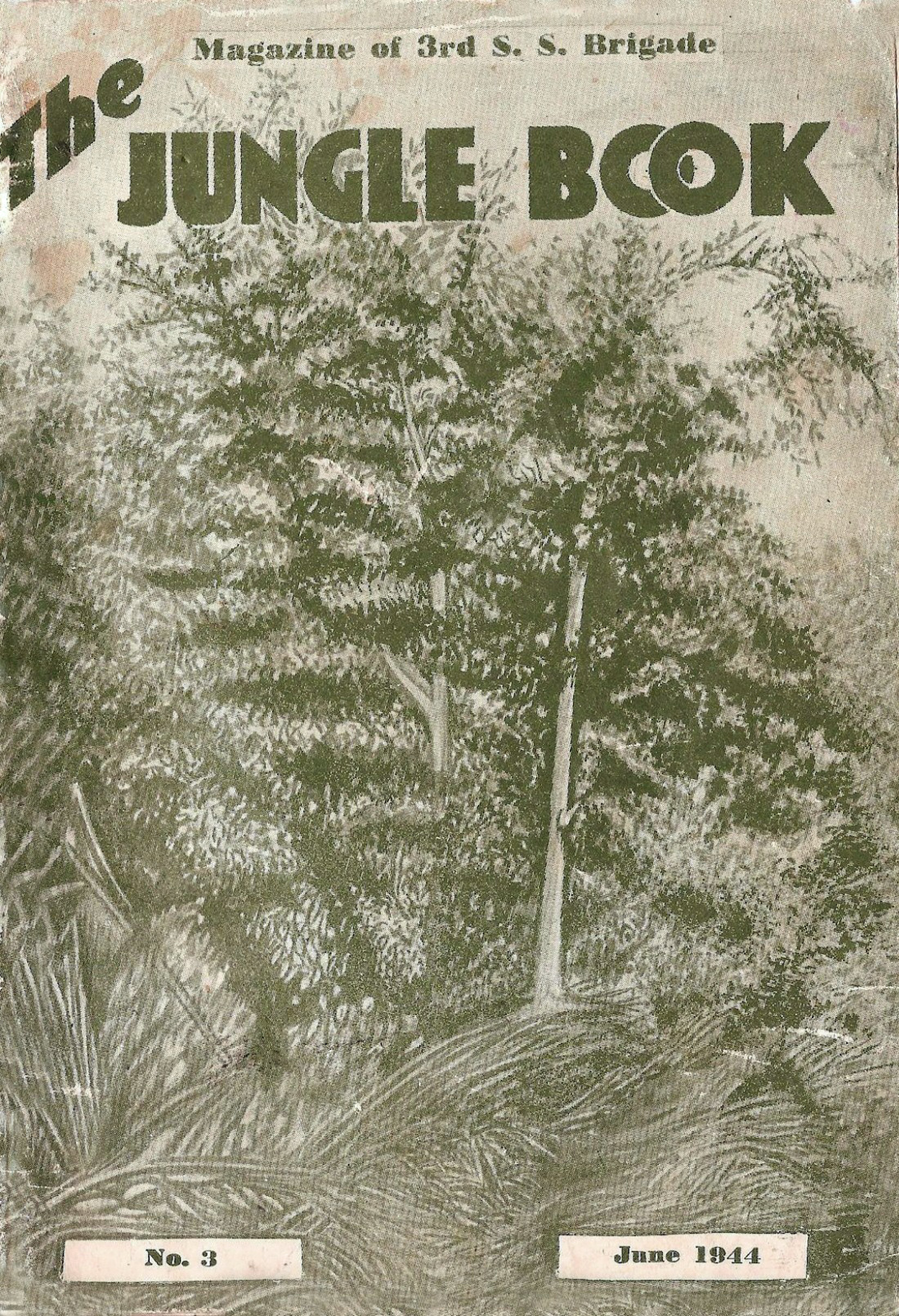
One of a series of the Magazine of the Third Commando Brigade produced and published between 1944 and 1946 for issue to those serving in the Brigade. This copy from Andy Maines. In a No 1 Commando Newsletter dated 27th Feb 1944 it mentions about the new Brigade Magazine being published. It states that "From this unit Lieut. J.R. Turpin is publishing advisor, and Lieut. A.J. Davies is Art Director on the publishing staff."
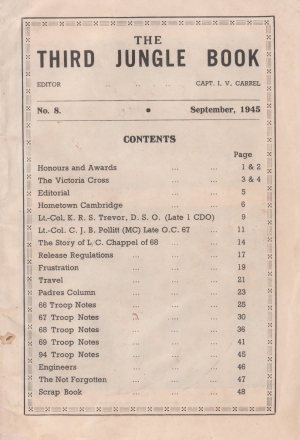
One of a series of the Magazine of the Third Commando Brigade produced and published between 1944 and 1946 for issue to those serving in the Brigade. This copy from Julie Warren.
In a No 1 Commando Newsletter dated 27th Feb 1944 it mentions about the new Brigade Magazine being published. It states that "From this unit Lieut. J.R. Turpin is publishing advisor, and Lieut. A.J. Davies is Art Director on the publishing staff."
One of a series of the Magazine of the Third Commando Brigade produced and published between 1944 and 1946 for issue to those serving in the Brigade. In a No 1 Commando Newsletter dated 27th Feb 1944 it mentions about the new Brigade Magazine being published. It states that "From this unit Lieut. J.R. Turpin is publishing advisor, and Lieut. A.J. Davies is Art Director on the publishing staff."
A raid on the Dutch coast near Wassenaar on 27/28 February 1944 by a small group of Commandos from No. 10 Inter Allied Commando who had embarked at Great Yarmouth on MTB 682.
Captain Charles Trepel and the 5 other French Commandos who left the MTB that night were never heard of again until the area around Scheveningen was liberated. During investigations into their disappearance their graves were found, five described as unknown Allied airmen, and one as unknown English soldier. The graves were disinterred and the men identified. There have been numerous suggestions as to how they met their death from drowning to execution.
On the 20th January 1944 the first landings were made, meeting very slight opposition. On the 25th January the Commando was withdrawn from the beach-head and returned to Bacoli. No 9 Commando's second landing at Anzio took place on the 3rd March 1944.
This operation can best be described in this account by Major Les Callf MC and bar who was at the time Captain commanding 5 Troop, No.9 Commando:
"My most thrilling and proudest moment of the war was in leading my troop in an attack against a superior force of paratroopers at Anzio. We had hardly recovered from our attack on Mt Ornito/Faito, suffering about fifty per cent casualties, when we were called back to Anzio as the situation there was critical. We landed on 3 March and 5 Troop was ordered straight into the front line sector held by the 9 Royal Fusiliers with orders to deal with a troop of German paratroopers who had infiltrated and taken over part of our lines.
5 Troop was about half strength, mustering one officer and twenty-eight ORs. We arrived at first light (05.45 hrs) and contacted the officer-in-charge for information as to the enemy's whereabouts. The only information was a vague wave of his hand down the wadi with the words, "There . . . somewhere down there . . . I've just been promoted Major!" With these words the officer disappeared down his dugout and left us to it.
The wadi was a deep ravine with stunted trees and foliage, about thirty feet down to mud and water, but it was the only cover available, so we had to use it. The assault team under Corporal Bostock pushed ahead with covering from the Bren-gun team on the highest part of the wadi. We usually did our raiding and fighting patrols in the darkness but this was special and urgent and we had to find them quickly, which we did, rather too quickly, in broad daylight. The enemy were well dug in on high ground overlooking the wadi and they opened fire with automatic weapons, slicing Corporal Bostock's trigger finger off as he returned fire. Casualties occurred through the troop. Corporal Searle quickly replied with mortar smoke as we regrouped. Corporal Bostock, assisted and covered by Hopkins and Belasco, reported back to me, and standing rigidly to attention, asked permission to fall out as he'd lost a finger - all this during enemy machine-gun fire!
The only way was a good old-fashioned bayonet charge.
We left the wadi and spread out in the dead ground below the enemy positions, with Brens on the flanks giving covering fire. Fusilier Storey*, who was lying just behind me, was killed instantly as we were getting into position.
Every man always carried two No. 77 smoke grenades so that a smoke screen could be created for about two throws of about forty yards. They knew the drill; throw and run through the smoke. This was the moment, and one I shall never forget. In broad daylight we had to cover about sixty yards of open ground against German paratroopers, well dug in. I looked to the right of me and the left and to CSM Walsh next to me, and gave the order, "Throw!" and as the smoke formed, "Charge!" and in we went, hard. I think we must have looked a fearsome body as we came through the smoke onto them. Many of them were killed and others put their hands up.
We suffered three killed* and nine injured. I'm not sure of the German casualties, but the official report gave twenty-five killed and twenty-three POWs, which was approximately twice the strength of No. 5 Troop on that day."
https://www.iwm.org.uk/history/the-10-things-you-need-to-know-about-d-day
Amongst the Fallen on 6 June 1944 were One Hundred And Seventy Seven Commandos.
The above picture shows a troop of No 2 Commando forming up in an olive grove for an attack. The combined raiding force was part of Land Forces Adriatic. The sketch map was drawn by the author of this report.
"Captain Webb was in command of a force of 2 Troops, which had to attack a series of strongly defended houses and machine gun posts. Throughout the action, Captain Webb’s cool, brilliant leadership, his complete unconcern at all times for his own safety, and his infectious aggressive spirit were an inspiration to all ranks. He led several assaults himself, continually urging and encouraging his men, and set a fine example, destroying the enemy himself wherever possible. During the heat of the attack he personally rallied his troops and led them on to the final assault. The success of this attack was very largely due to his dash and determination.
Later Captain Webb’s force was called to assist other Troops, who were held up, and again, despite the increasing numbers of snipers lying up in vineyards, his disregard for danger was outstanding. During a difficult dis-engagement and withdrawal, Captain Webb was a tower of strength, organising and giving personally every possible assistance to evacuate a large number of casualties back to the beaches. His bravery and unflagging energy undoubtedly saved the lives of several men. Captain Webb has shown consistent bravery and capacity for leadership in actions on the Dalmation Coast, notably on BRAC, where he was recommended.""Lance Corporal Anchor was in command of a bren gun. At dawn his troop led the assault against enemy positions, strongly fortified and tenaciously defended. During the early stages of the advance Lance Corporal Anchor, coming under vicious enemy machine gun fire, carried his bren gun forward across dangerously open ground. From now onwards, he not only succeeded in giving effective covering fire to the advancing troops and thereby the steady advance of the leading troops but continually engaged enemy strong points with deliberate and accurate fire, having complete disregard for his own personal safety.
In the final assault, Lance Corporal Anchor, observing several Germans immediately in front of him, displayed great initiative and courage, when, charging forward under intense fire he hurled a grenade in the midst of the enemy, who were making a last desperate attempt to hold the objective. This action contributed largely to their withdrawal from the position. By now a machine gun in the immediate vicinity was pouring bullets into the captured position. Lance Corporal Anchor located this machine gun and immediately engaged it through the window of his house forcing the enemy to stop firing and withdraw to another position. Throughout this action this Non-Commissioned Officer displayed not only courage and determination but great initiative at all times. His efforts contributed greatly to the success of the assault and were largely responsible for dislodging Germans determined to hold out at all costs.""This man showed great courage and determination throughout the action. In the early stages he was particularly conspicuous in the bayonet assaults. In the final stage during an attack on a fortified house, Dransfield’s section attacked but were held up by withering machine gun fire across very exposed ground. Dransfield, with complete disregard for his own safety, dashed through the fire, across open ground over barbed wire and through a suspected minefield to take up a position behind a wall on the enemy’s flank. He immediately brought accurate fire to bear on the enemy positions in the house. This attracted enemy fire away from his own section onto himself and enabled his section to re-group for a second attack. Under this hail of fire Dransfield was badly wounded in the leg. Despite this he continued to return the enemy fire, and when the second attack was launched he immediately joined in the assault, when he was again hit in the other leg. Although in great pain and bleeding profusely he crawled 20 yards and collapsed. This soldier’s offensive spirit and magnificent bravery were an outstanding example and inspiration to all."
Lance Bombardier John Willis Gelder, No. 2 Commando, whose citation for the Military Medal describes both the Commandos’ battle plan, the ground and the enemy defences. "This Non-Commissioned Officer showed outstanding courage, leadership and initiative. The attack in which he took part developed in three phases. In Phase 1 the attack was on a ridge studded with machine-gun posts. On the first burst of fire, the Section Sergeant and Corporal were hit, and Gelder immediately took control of the sub-section leading them with dash and no thought of personal danger. He saw that another section had eleven casualties from a machine-gun post, subsequently found to be manned by a German officer; he stalked this post despite the danger, and killed the officer with his Tommy gun. On Phase 2, Gelder collected remnants of the section and put in another attack on a machine-gun post, capturing the post and killing the occupants. On Phase 3 the objective was a strongly fortified house. The first attack was beaten off and Gelder was wounded. He refused to withdraw, and again went into the attack. He was hit in the face by a grenade, which exploded at his feet seriously wounding him. Despite this fact, he went on firing until his magazine was empty, encouraged the other men, who were now under mortar as well as machine-gun fire, and tried to carry a comrade out of action until finally collapsing. Gelder, who showed courage at Scaletta, Salerno and Hvar, acted as a Sergeant throughout this action, and was a great inspiration to his men. His gallantry in past actions earned him a recommendation at Salerno.""This Non-Commissioned Officer displayed untiring zeal, bravery and devotion to duty and was an example to all about him. Whilst under heavy shell fire he displayed the utmost coolness and disregarding his own safety entirely, he attended to the wounded and endeavoured to move them from the danger area. Later, during the attack he was constantly up with the assaulting troops in his capacity as medical orderly and he showed complete indifference to enemy fire whilst attending to wounded. He remained out under heavy fire dressing wounds and assisting in evacuating casualties. He went out repeatedly to bring in wounded men although he was continually sniped at and the ground was swept by enemy machine gun fire. He later remained out under heavy shell fire endeavouring to remove wounded to a place of safety. He was untiring in his work and at no time did he show the slightest regard for his own personal safety. His coolness and courage were great examples to those with him. During previous actions he has shown the same consistent devotion to duty."
Lance Bombardier Thomas Joseph Mulcahy, No. 2 Commando. This citation for the sixth Military Medal awarded for gallantry displayed at Spilje by No. 2 Commando personnel describes how LBdr. Mulchay stepped-up and took over a battlefield situation when his local commanders had been killed or wounded. "This Non-Commissioned Officer showed great courage and leadership throughout the action. In the early stages when his Section Sergeant was missing and his Corporal wounded, Mulcahy immediately took charge. He led his men into the assault showing complete disregard for his personal safety and carried the assault through to destroy two machine-gun posts and several weapon pits. Then when his section were pinned down, he carried out a reconnaissance under fire which enabled him to outflank these posts. In the final stages, his section was driven back in an attack on a strong point, but although wounded he rallied his men, and led a second attack in which he became more seriously wounded. Whilst lying on the ground, he encouraged his men and insisted on being the last to be evacuated. Throughout the action, he displayed great gallantry, determination and devotion to duty which, without question, materially contributed to the success of each assault. This Non-Commissioned Officer has repeatedly been outstanding in action and was recommended at Salerno."View a film broadcast about the raid here British Pathe News Film.
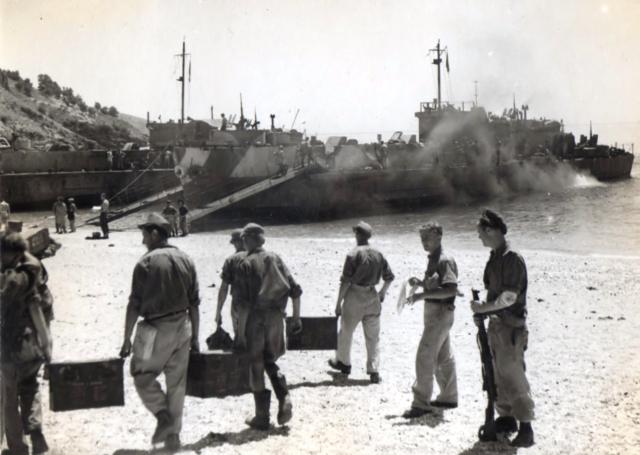
Landings at Sarande Albania.
Operation lasted into November.
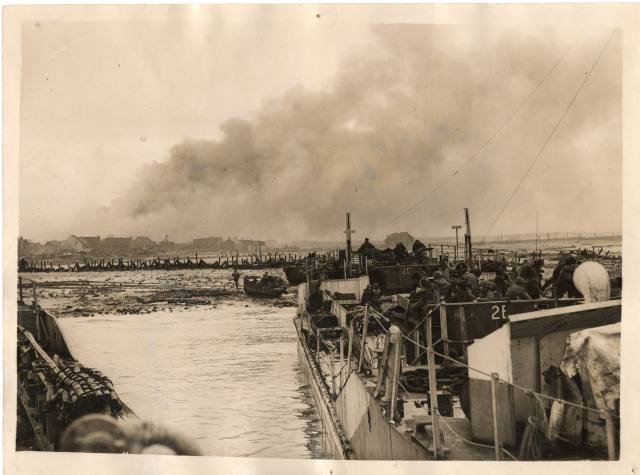
No.4 Commando, after a daring pre-dawn landing and nearly two days of bitter street fighting, succeeded in capturing the port and most of the town before being relieved by the 52nd Infantry Division. They were thus enabled to rejoin the rest of the Brigade, who without air or artillery support, had made a daylight assault landing at Westkapelle, in the face of heavy enemy fire from the formidable gun emplacements built into the sand dune dykes.
For three days, without any room for manoeuvre due to the deliberate flooding of the island by the Germans, the RM Commandos frontally attacked and, one by one, captured the heavily defended strong points sited along the crest of the dykes, before successfully linking up with their comrades of No. 4 who had advanced from Flushing.
After eight days of continuous action victory was achieved and the enemy surrendered. During the operation the Brigade suffered a total of almost five hundred casualties but they had the satisfaction of knowing that the port of Antwerp was opened and allied supplies were being offloaded by the end of the month.
(Source: Major James Dunning's book When Shall Their Glory Fade.)
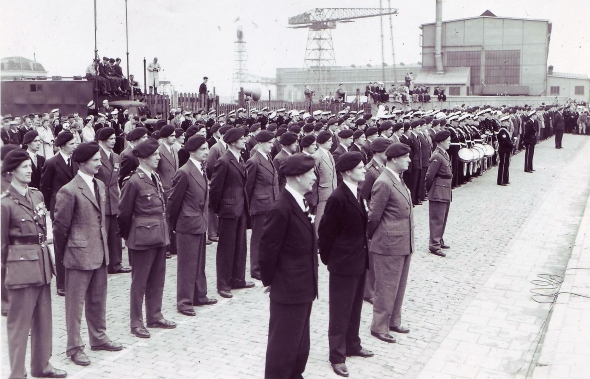
This ROH for Walcheren has been compiled primarily from the CWGC database, the Registers of Reports of Deaths - Naval Ratings, the Army Casualty Lists, and Unit war diaries. If you believe a name to be missing please advise us, with relevant sources, via the Forum or our Contact Form [HERE].
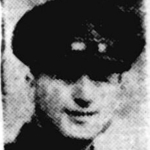
Marine William Bean died during operations in Holland. He was part of a patrol travelling in a convoy of 4 amphibious Buffaloes sent to Veere on the North East of Walcheren Island, and was among the twenty fatal casualties when one struck a submerged explosive device.
Sergeant Reginald Brehme died during operations at Westkapelle. Son of Albert Frank and Ada Ruth Brehme, of Southwark, London. His Commando were clearing the enemy from a series of gun batteries along the dunes at Westkapelle from Zouteland to west of Groot Valkenisse and Klein Valkenisse.
Major Paddy Brind-Sheridan was killed during operations at Westkapelle. Also served Commando Group HQ.
List of RM Commandos provided by RY (former CA Sec and CBF).
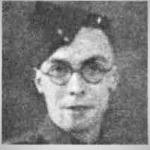
Lance Corporal Joseph Buchanan died during operations in Holland. Son of George Ernest and Margaret Buchanan, of Seaforth, Liverpool.
Marine Norman Burgess died during operations at Walcheren, Holland.
Sources
CWGC.
Registers Of Reports Of Deaths - Naval Ratings / National Archives file ADM104/128.
Marine William Cooke died during operations at Westkapelle, Holland. Son of Thomas Benjamin and Clara Jane Cooke, of Leicester.
Sources
CWGC.
Registers of Reports of Deaths - Naval Ratings / National Archives file ADM104/129.
Marine Albert Davies died during operations in Holland. Son of Samuel and Annie Davies, of Hawarden, Flintshire. His Commando were clearing the enemy from a series of gun batteries along the dunes at Westkapelle from Zouteland to west of Groot Valkenisse and Klein Valkenisse.
Marine James Day died during operations at Walcheren, Holland. Son of James William and Alice Maud Day, of Leicester.
Sources
CWGC.
Registers of Reports of Deaths - Naval Ratings / National Archives file ADM 104/129.
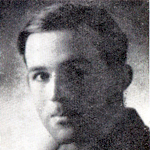
Marine Martin Derrick died during operations at Walcheren, Holland. Son of Martin and Mary Annie Derrick, of North Shields, Northumberland; grandson of Elizabeth Jensen, of North Shields.
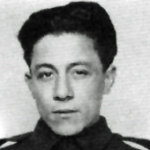
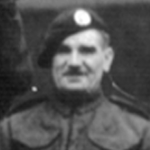
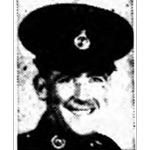
Marine Andrew Duke from Belfast died during operations at Walcheren. Son of John and Sarah Duke, of Belfast, Northern Ireland. His Commando were clearing the enemy from a series of gun batteries along the dunes at Westkapelle from Zouteland to west of Groot Valkenisse and Klein Valkenisse.
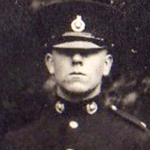
Marine Joseph Fawcett died of wounds inflicted during the Westkapelle landings at Walcheren. Son of Mr. and Mrs. H. Fawcett, of Liverpool [1][1a][2].
Marine Denis Fee died during operations at Walcheren, Holland. Son of James and Martha Fee, of Helensburgh, Dunbartonshire.
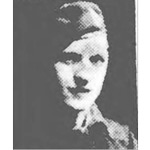
Lance Corporal William Fletcher died during operations at Walcheren, Holland. Son of William Robert and Florence Alice Fletcher, of Barking, Essex.
Private William Fulham, RAMC, died during operations at Walcheren, Holland. Son of Frederick and Annie Fulham, of St. Phillip's Marsh, Bristol; husband of H. M. E. Fulham, of Itchen, Southampton.
Marine Robert Gibbs died during operations at Holland. He was part of a patrol travelling in a convoy of 4 amphibious Buffaloes sent to Veere on the North East of Walcheren Island, and was among the twenty fatal casualties when one struck a submerged explosive device.
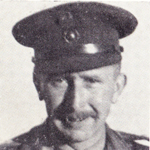
Sources
CWGC.
Registers of Reports of Deaths - Naval Ratings / National Archives file ADM 104/131.
Marine John Hay died during operations at Westkapelle, Holland. Son of John Richard and Agnes Maude Hay, of Darlington, Co. Durham.
Sources
CWGC.
Registers of Reports of Deaths - Naval Ratings / National Archives file ADM 104/131.
Sergeant Herbert Heywood died during operations at Westkapelle, Holland. Son of Frederick Thomas Heywood and Alice Heywood, of Fallowfield. Manchester.
Sources
CWGC.
Registers of Reports of Deaths - Naval Ratings / National Archives file ADM 104/132.
Lieutenant John Holmes died during operations at Walcheren, Holland. Son of John William and Mabel Holmes; husband of Barbara Holmes, of Lindley, Huddersfield.
Sources
CWGC.
Marine Ronald Hubbard was reported missing presumed killed during operations in North West Europe. His Commando were engaged in operations at Walcheren, Holland. He has no known grave. Son of Frederick Charles and Elsie Maud Hubbard, of Enfield, Middlesex.
Marine Harold Hughes died at sea during operations at Walcheren, Holland. He has no known grave. Son of Harold and Ada Hughes, of Hanley, Staffordshire.
Sources
CWGC.
Registers Of Reports Of Deaths - Naval Ratings / National Archives file ADM104/132.
Marine Reginald John died during operations at Walcheren, Holland.
Marine Kenneth Jordan died during operations at Walcheren, Holland. Husband of Kitty Evelyn Jordan, of Ashton, Lancashire.
Sources
CWGC.
Registers of Reports of Deaths - Naval Ratings / National Archives file ADM 104/133.
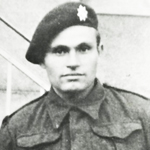
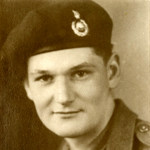
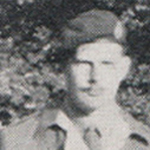
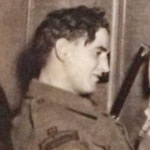
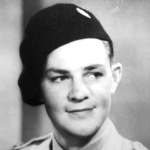
Lieutenant Gordon McKenzie, seconded to the RM Commandos, died during operations at Walcheren, Holland. From June 1944 he had been attached to 41RM Commando.
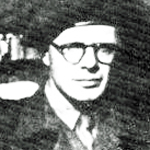
Lieutenant Adolphe Meny, 4 (Belgian) troop, was killed during operations at Domburg, Walcheren. (Source: Account of Carlo Seghers in "20 Heroes of Us" by General Crahay.)
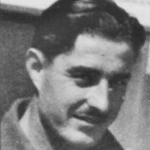
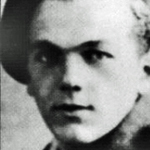
Marine Byron Moses died during operations at Walcheren, Holland.
Sources
CWGC.
Registers of Reports of Deaths - Naval Ratings / National Archives file ADM 104/134.
Marine James Muir died during operations at Westkapelle, Holland. Son of James and Jessie Muir, of Ayr.
Sources
CWGC.
Registers of Reports of Deaths - Naval Ratings / National Archives file ADM 104/134.
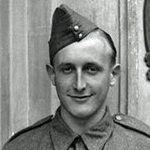
Marine Robert Nicholson died at Harefield County Hospital, Middlesex, of wounds inflicted at Walcheren, Holland. Son of Richard Fisher Nicholson and Hannah Nicholson, of Belfast.
Marine Henry Page died during operations at Walcheren, Holland. Son of Mr. and Mrs. Edward Page, of Barry Dock, Glamorgan.
Sources
CWGC.
Registers Of Reports Of Deaths: Naval Ratings / National Archives file ADM104/135.
Marine Frederick Potter died during operations at Holland. Son of Fred and Mary E. Potter, of Hull.
Marine John Read died during operations at Walcheren Island, Holland. Son of Samuel and Florence Mary Read, of Northfleet, Kent; husband of Gertrude Mary Read, of Northfleet.
Corporal Charles Ripiner died in Holland. Son of Richard and Gladys Ripiner; husband of Elizabeth E. Ripiner, of Stirling. His Commando were clearing the enemy from a series of gun batteries along the dunes at Westkapelle from Zouteland to west of Groot Valkenisse and Klein Valkenisse.
Marine John Robertson died at Ostend Belgium. His Commando were engaged in operations at Westkapelle, Walcheren.
Sources
CWGC.
Registers of Reports of Deaths - Naval Ratings / National Archives files ADM 104/136.
Marine William Sage died at Ostend, Belgium. Son of Edward Colston Sage and Ethel Elizabeth Sage, of Bristol.
Sources
CWGC.
Registers of Reports of Deaths - Naval Ratings / National Archives file ADM 104/136.
Marine Cyril Savage died during operations in Holland. Son of Kate Savage, of Patchway, Gloucestershire.
Marine Philip Shears died during operations at Walcheren Island, Holland.
Sources
CWGC
Registers of Reports of Deaths - Naval Ratings / National Archives file ADM 104/136.
Corporal Ernest Shrigley died during operations in Holland. Son of Thomas Arthur and Emma Jane Shrigley, of Talke, Staffordshire.
Marine Colin Skelland died during operations at Holland. He was part of a patrol travelling in a convoy of 4 amphibious Buffaloes sent to Veere on the North East of Walcheren Island, and was among the twenty fatal casualties when one struck a submerged explosive device.
Corporal Charles Smith died during operations at Walcheren Island, Holland. Son of William John and Margarate Sarah Smith, of Leytonstone, Essex.
Sources
[1] CWGC.
[2] Registers of Reports of Deaths - Naval Ratings / National Archives file ADM 104/137.
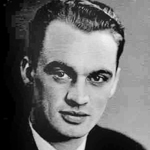
Corporal Thomas Steventon was reported missing presumed died during operations at Walcheren, Holland. He has no known grave. Son of Thomas Steventon, and of Florence Steventon, of Wednesbury, Staffordshire.
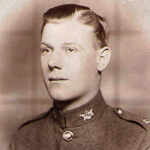
Lieutenant Michael Style, attached to 47RM Commando, died during operations at Walcheren, Holland.
Sources
CWGC.
Corporal Kenneth Teed, married and from Bridgnorth, Shropshire, was reported missing presumed died during operations at Walcheren, Holland. Son of Mr. and Mrs. A. J. F. Teed, of Bridgnorth, Shropshire.
Marine Albert Thatcher, 'B' troop, died of wounds he received during the allied landings at Westkapelle, Walcheren. He was on board LCT 18 when it was hit by a shell and he received shrapnel wounds. He was taken to a Beach Dressing Station but died the next day.
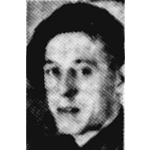
Salo Weich, an Austrian of Jewish faith, served in 3 troop, also known as 'X' troop, of the Inter Allied Commando under an alias of Robert Geoffrey Hamilton. He was killed during operations with 41RM Commando at Walcheren. Son of Jacob and Sabine Weich, of Vienna, Austria.
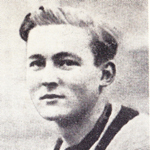
A report by Lieutenant Colonel Robert William Pallister Dawson, Officer Commanding No.4 Commando, on Operation Infatuate 1 at Flushing, Holland. Provided by his daughter Elizabeth Dawson.
Operation 'Bean' report which took place on 23 November 1944.
Apart from No 1 Commando this operation included elements of No 5 Cdo/ 8th Fd Regt/' V' Force. All abbreviations have been transcribed as written to maintain the integrity of the original document.
OPERATION “BEAN” SECRET
OP “BEAN” REPORT
Date of Report - 23 Nov 44
Date of Op - 22/23 Nov 44
Time Out - 1730 22 Nov
Time In - 1200 23 Nov
TAKING PART
1 Cdo 3 Troop. 6 Troop. 1 Sec 4 Tp. Cdo HQ. 1 MMG det of 2 Tp
5 Cdo 4Troop. 1 Mortar Det of 6 Tp.
8th Fd Regt R.A. - “W” Batt.
“V” Force 1 and 10
Total Str of 1 & 5 Cdos - 22 and 293 OR’s
DETAILS
1. At 1730 hrs 22 November 44 force left NURULLAPARA and CHIRADAN. Route was through GODUSARA to Mil Road and SOUTH along this road.
The force split into three distinct groups.
At 2200 hrs on night of 22 Nov No. 3 Troop crossed TON CHAUNG unobserved and took up defensive perimeter at 408263 where it remained until ½ hr before dawn. The troop then moved up to 500 yds east of HINTHIYA. HINTHIYA was then shelled and MMG opened up on two JIFS seen to be running from the village in a SE direction. It is not if any casualties were inflicted. At 0715 hrs, No. 2 sec plus HQ less wireless and 2” Mortar moved into the attack and cleared the North of the village as far as track 405256. No.1 sec remainder of HQ, Gunner OP and MMG were then brought forward. No. 2 Sec then advanced South beyond track when it met opposition. 3 JIFS were observed crossing track and the sec opened fire – the enemy returned the fire. D sub moved on the right and C sub on the left. As C sub moved forward, 3 JAPS were seen who were fired at by TSMG and Grens. 3 JAPS were killed, 1 wounded, and 1 prisoner was taken. C sub then came to a clearing and took up fire posns, and D sub moved up in line on the right. The sec came under fire from 2 LMGs and tree snipers. The Bren opened up at 30 yds range and either wounded or killed 4 Japs. D sub Bren killed 1 sniper who fell out of tree, and hit one other. Another rifle gp killed 1 JAP and silenced the enemy auto fire. During this action, a JAP officer (recognised by his superior dress) was wounded in the leg and while being dragged away by two others was again hit by a burst of Bren.
When 2 sec became static, No. 1 sec plus MMG were brought up on left flank. After crossing track they were fired on by tree snipers who engaged and silenced them. Advancing a further 100 yds, 1 sec came under cross fire from 1 LMG on PIMPLE 409254 and 1 LMG at 407255. Own Bren opened up on PIMPLE and silenced enemy LMG. The MMG on left flank opened up on tree snipers immediately to No. 1 Sec front and no fire was again returned. The MMG saw 15 JAPS plus an LMG of which 5 broke cover. The order was then given for No. 3 Troop to withdraw over the Chaung to Cdo HQ.
CAS - ENEMY
Killed - 6
Wounded 7 and 1 Offr
Prisoner - 1
Possibles - 6
CAS – OWN TROOPS
NIL
INFM GAINED
HINTHIYA full of trenches. Bunker posn at 403254 approx. Enemy str, since at least 2 possibly 3 LMGs met and 1 gren discharger possibly 2 secs of a pl. No. of JIFS not known, possibly other JIFS were sniping as some of long range sniping was very accurate.
4 Troop 5 Cdo with FOO att had moved off Mil road at 2100 hrs on track to KAINGYI at 399282. This track was no more than a pig trail through dense jungle and mud in places 2 and 3 ft deep. Speed was 3 hrs to 1 mile. At 0300 hrs firm base made at 419275 and at 0700 hrs OP moved to pt 432276, NES. Arty fire from 0800 to 0900 hrs approx. On return party investigated Hil 213. NES. Rejoined Cdo HQ at 1000 hrs. The entire force then returned along Mil road through GODUSARA and reached BOLSTER by 1200 hrs 23 Nov 44.
INFM GAINED
Estimated posns reported West of KAINGYI are not manned in strength and at KAINGYI is not occupied.
6 Troop in posn during night at 414257 at 0515 hrs. Moved through dense jungle to hill 187 arriving 0610 hrs. NES. Report on defences of hill att. Troop then moved down hill to give help need be to 3 Tp, but was ordered to gd pt where TON CHAUNG emerges from foothills. 6 Tp followed 3 Tp across TON CHAUNG and back Cdo HQ.
INFM GAINED
Sketch att.
Cdo HQ in posn during night at 408267 est OP at first light, observing HINTHIYA. During 3 Tps action occasional sniper fire directed at OP. As 3 Tp was withdrawing a large with small explosions seen on South of village. 3” Mortar fire approx. 20 rds HE at this target and into the village.
On 23 Nov 44 during operation “BEAN” (1 Cdo., 3 & 6 Tps, 4 Tp 5 Cdo, and att Arty OP and SBs under command Major J.H. Davies of 1 Cdo). The enemy were engaged in HINTHAYA (map ref 398255). A number of Jap were killed and wounded and 1 prisoner was taken. A statement was taken from the man who took the prisoner.
6286923 PTE. OLIVER. L.R.S. (BUFFS) joined the reg army in boys service at the age of 14. He volunteered for Cdo work in 43 at the age of 20, and was posted to 1 Cdo in Oct that year. His description of the action on 23 Nov is given below:-
Took up posn with D sub sec on our right flank and remained there for about 30/40 minutes. Enemy snipers opened up and our crews opened up. The snipers seemed to be tied in the trees because when hit they did not fall. Some Japs seemed to be trying to move around on our left flank and were engaged by one of our sub secs. We tied up the prisoner, and as the sniping was rather persistent and sometimes appeared to be aimed at the prisoner, we withdrew carrying him with us. We had gagged him as he was screaming. As we reached Tp HQ we withdrew across TON CHAUNG. I noticed that the bashas in the South part of the village were burning and could hear ammunition exploding. The prisoner was very strong and struggled hard to get away."
POSITION ON PT. 187
The sketch that was here will be uploaded as a separate document.
Please refer to ‘Operation Bean Pt. 187’
NOTE 1. Fire lanes and grenade chutes down steep slopes all around.
2. Approach by spur well camouflaged.
3. Dead leaves and state of old pieces of paper found indicated that the hill not lived for 2 to 3 weeks.
4. All around view of up TON CHAUNG and area HINTHAYA to coast and South to ALETHAUNGYAW and ST. MARTINS ISLAND.
COMMENT
An excellent OP but would not withstand 25 pounder HE fire.
1st Commando Brigade were placed under command of the 7th Armoured Div (British 12 Corps). They were tasked with clearing the enemy from an area between the railroad to Roermond and the Meuse river, and securing the villages of Maasbracht, Brachterbeek and Linne.
The National Archives hold the following records regarding this operation.
DEFE 2/95 Combined Operations Headquarters: "Baboon" "Copyright" "Blackcock" "Bruteforce" "Barbaric" and "Bristle" Date: 1941-1945
WO 205/846 21st Army Group Operational reports: Operation Blackcock Date: 1945 Jan
WO 205/847 Operation Blackcock: working papers Date: 1945 Jan.
WO 205/848 Operation Blackcock: 7 Army Division Date: 1945 Jan.
WO 205/849 Operation Blackcock: 52 Division Date: 1945 Jan
WO 351/60 21 Army Group: Operation "BLACKCOCK"; clearing the area between the River Maas and the River Roer 15-26 January 1945 Note: With maps Date: 1945 Jan 01 - 1945 Dec 31.
An attack on the German held small island of Kapelsche Veer. It had a harbour on the north side and was simply a segment of low-lying land between the main River Mass and the much narrower Oude Maas.
A German Paratroop Division, had taken up positions on Xmas Eve, and were well dug in at the top of a dyke on both sides of the island. A previous attempt by Polish Forces had been repulsed as was this attempt by the Commandos who suffered many casualties.
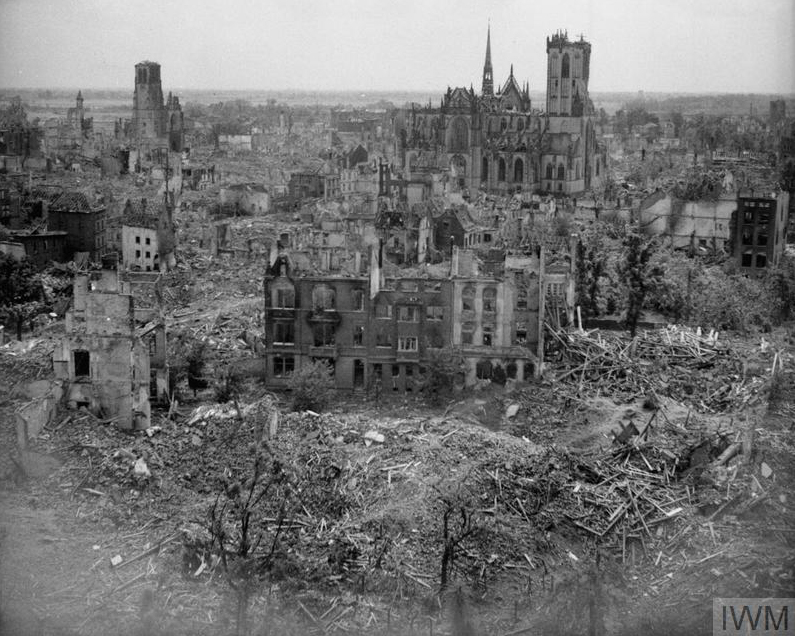
An operation by the 1st Commando Brigade to cross the River Rhine and capture and hold Wesel. The above photo © IWM (BU 7670) shows the devastation after the air raid.

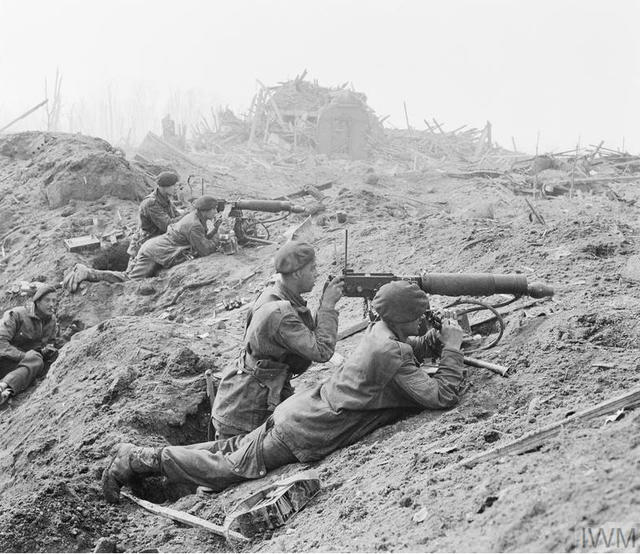
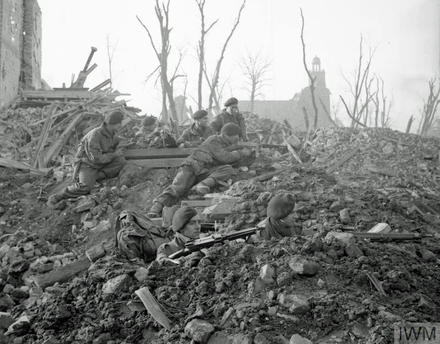
Elsewhere a patrol led by RSM Woodcock of 6 Commando came across the headquarters of the Wesel garrison commander, General Deutsche. This German headquarters was only 100 metres from where the Commando Brigade HQ had sited itself. The General refused to surrender and was shot dead. A very useful map showing all anti-aircraft gun locations around Wesel was recovered from the garrison headquarters, and the details were passed back to enable Allied air strikes to be mounted.
At around 1000 hours on 24th March the British 6th Airborne and the US 17th Airborne Divisions dropped on zones a few kilometres north of Wesel. Many lessons from the failure at Arnhem had been absorbed into the airborne plan, especially the need to descend right on top of the tactical objectives. German flak had not been suppressed sufficiently by Allied airstrikes or artillery and there was consequent carnage particularly amongst the plywood gliders of the British Airlanding Brigade and the US Glider Regiment, and amongst the US carrier planes who few straight and low over their parachute dropping zones as did the re-supply bombers that followed. One reason for the unexpected appearance of these German flak weapons was that many of the 20mm guns were mounted on vehicles and they could quickly occupy alternative positions when they felt threatened by Allied planes or guns.
Despite the quick reduction in available strength due to casualties the drops were successful and all objectives were seized. The principle of overwhelming force saw over 17,000 Allied airborne troops delivered in one lift. The personnel drop was quickly followed by a large supply drop delivered by 240 B-24 bombers; the recovery rate for these supplies was 80% in the 6th Airborne Division’s area. Allied airborne casualties were around 2,600 killed, wounded and missing which was in fact less than had been forecast; 4,000 German troops were taken prisoner and many others were killed. The enemy on the ground, apart from some parachute and SS troops, was generally demoralised by the swiftness and size of the drop and was keen to surrender once the battle started. However there was one serious impact on the Commando Brigade’s operation and that was a cessation of supporting artillery fire during the airborne personnel and supply drops.
An example of how this lack of artillery support affected fighting during the German counter attacks from the north can be gleaned from the citation for a Military Medal awarded to No. PO/X 106961 Lance Corporal John Sykes, 45RM Commando.
On 24th March the 1st Battalion the Cheshire Regiment crossed the Rhine in support of the Commando Brigade and this reinforcement allowed fighting patrols to start clearing Wesel of the enemy. Resupply arrived and casualties were evacuated.
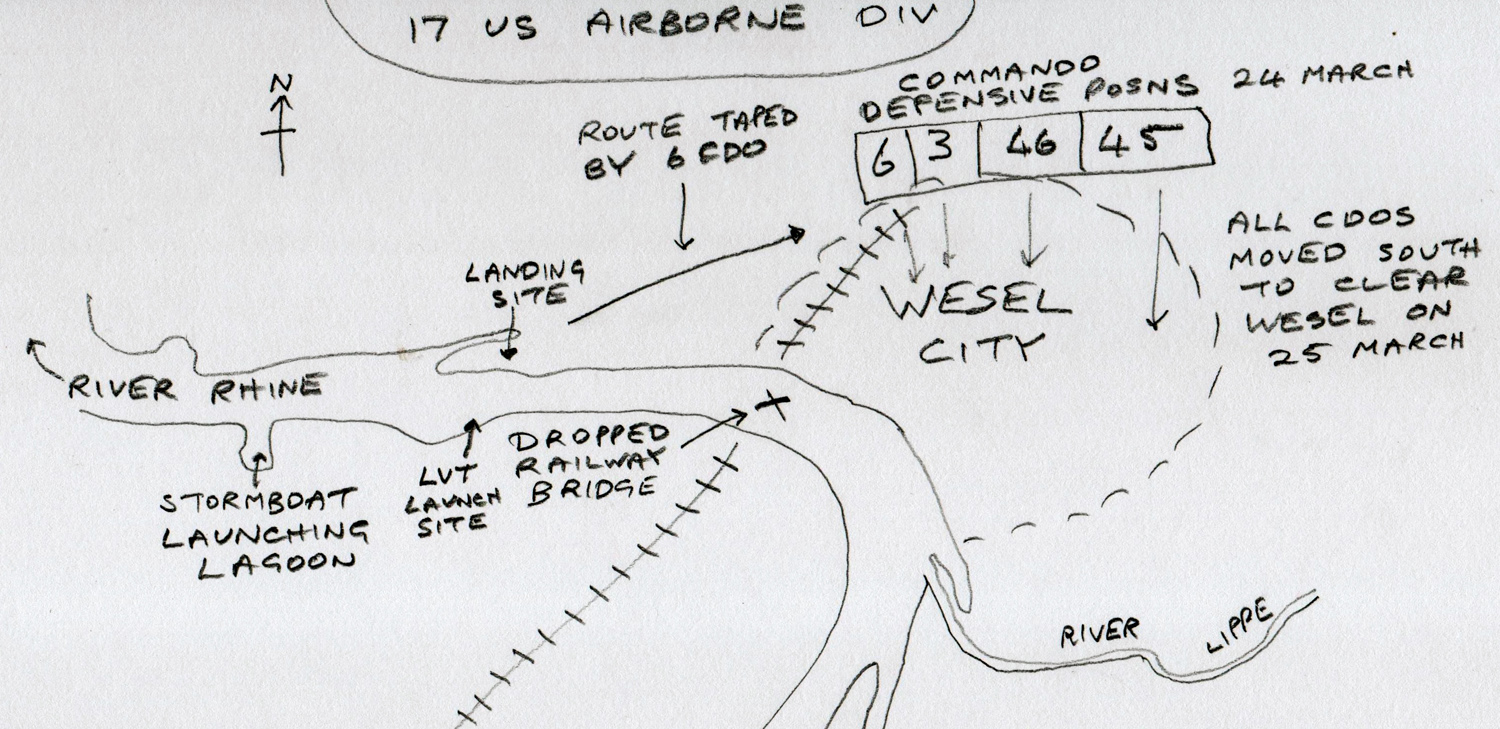
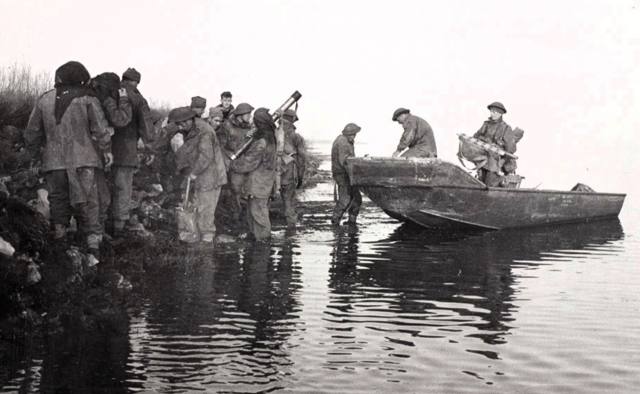
Battle of the Argenta Gap, Lake Comacchio, Italy, launched on the 1st April 1945 involving the whole of 2 Commando Brigade.
Operation Roast was an attack across Lake Comacchio to capture the spit of land between Lake Comacchio and the Adriatic Sea, from the River Reno to the Valetta canal, a distance of about 7 miles. It was essentially a plan to draw German reserve forces away from the main offensive to be launched across to the East. This was followed by Operation Impact Plain on the 10/11th April at the southern tip of Lake Comacchio, and Operation Impact Royal on the 15/6th April at the Fessina Canal East of Argenta.
Two Victoria Crosses were awarded to men of the 2nd Commando Brigade.
Read more about this operation here in our No 2 Commando History section.
This operation is linked to Operation Roast.
Battle of the Argenta Gap, Lake Comacchio, Italy, launched on the 1st April 1945 involving the whole of 2 Commando Brigade. Operation Roast was an attack across Lake Comacchio to capture the spit of land between Lake Comacchio and the Adriatic Sea, from the River Reno to the Valetta canal, a distance of about 7 miles. It was essentially a plan to draw German reserve forces away from the main offensive to be launched across to the East. This was followed by Operation Impact Plain on the 10/11th April at the southern tip of Lake Comacchio, and Operation Impact Royal 13-16 April at Fossa Marina, East of Argenta.
A good description of the action during Impact Royal can be found in the award citation for Lance Sergeant L.W. Hopkins DCM [view....].
This operation is linked to Operation Roast.
Battle of the Argenta Gap, Lake Comacchio, Italy, launched on the 1st April 1945 involving the whole of 2 Commando Brigade. Operation Roast was an attack across Lake Comacchio to capture the spit of land between Lake Comacchio and the Adriatic Sea, from the River Reno to the Valetta canal, a distance of about 7 miles. It was essentially a plan to draw German reserve forces away from the main offensive to be launched across to the East. This was followed by Operation Impact Plain on the 10/11th April at the southern tip of Lake Comacchio, and Operation Impact Royal on the 15/6th April at the Fessina Canal East of Argenta.
An operation to cross the Amer (a continutation of the River Maas) in the Netherlands that involved the whole of 48RM Commando. The objective was a raid into the Biesbosch to acheive the immediate occupation of Steenen Muur and search for a reconnaissance patrol that had been missing for 48 hours. The raid which commenced at 1300hrs was a complete success and the Commando withdrew at 2130hrs back to their positions at Geertruidenberg suffering no casualties.
Report of Operation 'Bottle' undertaken by No 1 Commando whilst on policing duties in Hong Kong 15 October 1945.
National Atchives Document reference WO 218/18